ANDREW S. ERICKSON
Despite coming out extremely late in the year, the Pentagon’s 2022 China Military Power Report (CMPR) was worth the wait. For me, as usual, it was worth reading word for word. Since the first edition in 2000, the annual CMPR issued by the Department of Defense (DoD) has offered government-verified data on China’s meteoric military rise that is often simply unfindable or unconfirmable anywhere else. As Assistant Secretary of Defense for Indo-Pacific Security Affairs Dr. Ely Ratner emphasized at the public rollout presentation—hosted by the American Enterprise Institute (AEI) in Washington, DC on 8 December 2022—it is “the most authoritative unclassified articulation of PRC capability and strategy.” Developed and edited under the capable leadership of Deputy Assistant Secretary of Defense for China Dr. Michael Chase, this year’s edition may well be the most smoothly written, the one that most thoroughly references Chinese sources, and the one with the most extensive coverage of space and Taiwan security issues by a significant margin. [All quotes from Drs. Ratner and Chase are from the AEI event.] Perhaps even more so than any of its predecessors, the 2022 CMPR illustrates its points with a superb set of graphics (appended in full at the bottom of this post.) What follows is my best effort to distill the report’s key points.
Top Revelations
Burgeoning Nuclear Triad
Most pointedly, the 2022 CMPR documents a relentless ramp-up of People’s Republic of China (PRC) military capabilities toward 2027 and beyond (particularly on p. 94). Despite having over 400 operational nuclear warheads already, and expanding at a rate that is projected to reach 1,000 by 2030 (most deployed on systems capable of ranging the continental U.S.) and would reach 1,500 by 2035, Beijing refuses to acknowledge its buildup or declare anything resembling an end goal, let alone engage in substantive arms control discussions. This last figure is no theoretical flourish: in the words of Dr. Chase, “we project out to 2035 when we expect that they’ll want to have about 1,500 nuclear weapons.” As Bridge Colby points out: 1,500 is roughly the limit of New START for operationally deployed U.S. warheads. We are seeing the dangerous results of Xi’s decade-and-counting in command: demanding unconditional deference at home and, increasingly, abroad.
PRC nuclear weapons policy is ultimately the preserve of the paramount leader. With rapid, open-ended buildup and shunning arms control discussions, Xi is putting his decade-and-counting-in-power stamp on nuclear weapons force structure. Worryingly, it’s the same stamp he’s put elsewhere: commanding deference despite growing opposition, and eschewing restraints even as the United States embraces them. Some of these developments are sudden: “In 2021, Beijing probably accelerated its nuclear expansion.” (p. 95) This year’s report tallies three times as many ICBM launchers and twice as many ICBMs (now 300) as last year’s. Dr. Chase elaborates: “We also see other important changes, movement in the direction of a launch on warning posture and a higher level of readiness at least for some units of the PLA rocket force. …they’re creating a much more diverse set of capabilities that will put other options on the table, and they haven’t been transparent about the intent behind the…change in trajectory that’s leading them to these much larger numbers. …they have been very reluctant to engage in discussions about strategic stability or strategic risk reduction issues. … And they also have a long track record that they’ve continued of canceling some of the exchanges that we’ve planned as a political signaling mechanism as we saw after Speaker Pelosi’s visit to Taiwan this summer, and so that layers another set of challenges on top of this.”
The CMPR documents other dangerous trends: “China has reduced transparency in its nuclear program as its capabilities are increasing. It ceased reporting its stockpile of separated plutonium to the International Atomic Energy Agency in 2017 while still being capable of producing plutonium in reactors and separating it at its reprocessing plant at Jiuquan….” (p. 98)
In the undersea nuclear weapons realm, “The PRC is conducting continuous at-sea deterrence patrols with its six JIN-class (Type 094) submarines (SSBNs), which are equipped to carry up to 12 JL-2 or JL-3 SLBMs.” (p. 95) “The fielding of newer, more capable, and longer ranged SLBMs such as the JL-3 gives the PLAN the ability to target the continental United States from littoral waters allowing the PLAN to consider bastion operations to enhance the survivability of its sea-based deterrent,” the CMPR states. “The South China Sea and Bohai Gulf are probably the PRC’s preferred options for employing this concept.” (p. 96)
Completing China’s first-ever nuclear triad, the PLA Air Force (PLAAF) has a nuclear mission again for the first time in decades. “The PLAAF has operationally fielded the H-6N bomber, providing a platform for the air component of the PRC’s nascent nuclear triad,” the CMPR confirms. “The H-6N, compared to other H-6 bombers, adds an air-to-air refueling probe, as well as its recessed fuselage modifications that would allow for external carriage of an air-launched ballistic missile (ALBM) assessed to be nuclear capable. China is probably also developing a strategic stealth bomber….” (p. 96)
Looking ahead, the CMPR offers particularly disturbing details: “A 2017 defense industry publication indicated a lower-yield nuclear weapon had been developed for use against campaign and tactical targets that would reduce collateral damage. … The DF-26 is the PRC’s first nuclear-capable missile system that can conduct precision strikes, and therefore, is the most likely weapon system to employ a lower-yield warhead in near term.” (p. 98) With the PRC’s worrisome combination of rapid military development and extremely low transparency, one can only imagine what the next several years of CMPRs will reveal. Welcome to the decade of maximum danger!
Satellites Support and Missiles for Long-Range Precision Strike
People’s Liberation Army Rocket Force (PLARF) missile numbers and capabilities, already enormous, continue to increase dramatically. The report offers numerous datapoints suggesting great advances in targeting and long-range precision strike. Two of the most dramatic among them: missile launches and satellites in orbit. The PLARF last year launched more ballistic missiles, outside of conflict zones, than the rest of the world combined (approximately 135). (p. 64) Among these ballistic missile tests was that on 27 July 2021 of a key aspects of a Fractional Orbital Bombardment System (FOBS)—capabilities unseen since the Soviet Union finished decommissioning and dismantling its FOBS architecture in 1984. Following China’s “first fractional orbital launch of an ICBM with an HGV [hypersonic glide vehicle],” in “the greatest distance flown (~40,000 km) and longest flight time (~100+ minutes) of any PRC land-attack weapons system to date,” the HGV flew around the world and “impacted inside China.” The HGV “did not strike its target, but came close.” (p. 65) In the words of Tom Shugart: “probably close enough for nuclear weapons.”
For its part, “The PLAAF is rapidly catching up to Western air forces.” (p. 59) With 1,900 4th-4.5th-5th-generation fighter aircraft (300 more than a year before)—2,900 including fighter trainers—the PLAAF and PLAN Aviation are heavily focused on weapons delivery, involving an ever-more-sophisticated panoply of ballistic and cruise missiles. Transport aircraft have increased by 50 to 450. Thanks to hard-won improvements in domestic jet engines, the J-10 and -20 fighters have switched to the indigenous WS-10 and the Y-20 heavy transport has likely switched to the indigenous WS-20. (p. 150)
On a related note, PRC space-based command and control and surveillance architecture is skyrocketing in quantity and coverage, backed by expanding launch support and replenishment options. Over the past decade, China has doubled its launches per year and satellites in orbit alike. (p. 88) Since 2018, China has nearly-doubled its on-orbit ISR systems to more than 260, adding 60 over the previous year alone, and thereby making it second only to the United States in number deployed (p. 89). All told, the PLA now “owns and operates about half of the world’s ISR systems, most of which could support monitoring, tracking, and targeting of U.S. and allied forces worldwide, especially throughout the Indo-Pacific region.” (p. 90) China currently has “at least three early warning satellites in orbit.” Moreover, “in 2019, Russia offered to assist China in developing a missile early warning system.” (p. 99)
Indeed, I would note, this is part of a larger, potent pattern of Russo-Chinese alignment and potentially even deeper collaboration in the future. The two aerospace powers began ballistic-missile early-warning-system (BMEWS) development and related information sharing decades ago and may be poised to build on this significantly. With regard to space, Russia has leading technology- and geography-based advantages in intelligence access and global instrumentation, including a wide range of space and maritime tracking and observation facilities, signals intelligence sites, and other clandestine and covert-collection instrument accesses. Beijing seeks access to sites for global instrumentation for all manner of terrestrial and space surveillance and well-developed networks for access and finished analysis—both areas to which Moscow has applied extensive resources and effort since early in the Cold War.
As the CMPR rightly emphasizes, Beijing’s Positioning, Navigation, and Timing (PNT) satellite constellation, BeiDou, now has 49 operational satellites. Second only to that of the United States in overall scope and capability yet structured substantially differently, China’s PNT system offers unique text messaging and user tracking functions and “provides additional military C2 capabilities for the PLA.” (p. 91) “BeiDou has a worldwide positional accuracy standard of 10 meters,” the CMPR documents, “accuracy within the Asia-Pacific region is within 5 meters.” (p. 91) Additionally, “China owns and operates more than 60 communications satellites, at least four of which are dedicated to military use.” (p. 90)
This year’s CMPR likewise offers an unusually strong section on PRC counterspace security developments in addition to the aforementioned space-based issues. (pp. 87–94, 93) While previous editions tended to devote less coverage to space security per se and stick to more general summary terms when they did address the subject, the 2022 edition offers a fusillade of disturbing specifics. Among its anti-satellite (ASAT) weapons, the PLA has deployed and continues to train with an operational missile “intended to target low-Earth orbit [LEO] satellites.” The PLA further seeks ASATs ranging up to geosynchronous earth orbit (GEO). (p. 69) For example, “China launched an object into space on a ballistic trajectory with a peak orbital radius above 30,000 kilometers, near GEO altitudes. No new satellites were released from the object, and the launch profile was inconsistent with traditional SLVs [space launch vehicles], ballistic missiles, or sounding rocket launches for scientific research, suggesting a basic capability could exist to use ASAT technology against satellites at great distances and not just LEO.” (p. 93)
China is developing additional counterspace capabilities regarding electronic warfare (e.g., satellite jammers), offensive cyber, and directed-energy weapons (DEWs). Regarding DEWs, the report specifies, “China has multiple ground-based laser weapons of varying power levels to disrupt, degrade, or damage satellites that include a current limited capability to employ laser systems against satellite sensors. By the mid- to late-2020s, China may field higher power systems that extend the threat to the structures of non-optical satellites.” (p. 93)
China also “has demonstrated sophisticated, potentially damaging on-orbit behavior with space-based technologies.” (p. 89) China’s Shijian satellite series has long been used to test experimental technologies; particularly those with dual-use applications, including counterspace. “In January 2022,” for example, “Shijian-21 moved a derelict BeiDou navigation satellite to a high graveyard orbit above GEO. The Shijian-17 is a Chinese satellite with a robotic arm. Space- based robotic arm technology could be used in a future system for grappling other satellites.” (p. 94)
Clearly, China is engaged in a staggering array of space research and development—some with potentially transformational military implications. “Since at least 2006,” the CMPR relates, “the government-affiliated academic community in China began investigating aerospace engineering aspects associated with space-based kinetic weapons—generally a class of weapon used to attack ground, sea, or air targets from orbit.” (p. 93)
Finally, to support access to space itself, a wide range of space launch vehicles—both deployed and under development—offer China options for orbiting larger systems and rapidly augmenting or replenishing on-orbit systems. The last is an important capability in the event of conflict.
Threating Taiwan, Projecting Power Overseas
Facing the Taiwan Strait, the CMPR describes the PRC’s mounting threat to Taiwan moving toward Xi’s key PLA capabilities preparation target year of 2027 (pp. 32–38) and the PLA’s growing panoply of weapons and increasingly focused training in support of that prioritized goal. Starting on p. 96, the report offers a detailed section on “PRC Military Courses of Action Against Taiwan.” Last year, the PLA conducted frequent amphibious training, with more than 120 instances in a three-month period. (p. 129) The CMPR rightly emphasizes China’s organization and integration through training of civilian maritime vessels (roll on-roll off/RO-RO ships in particular) to help fill remaining gaps in amphibious sealift. (p. 129) 2021 also witnessed growing frequency and realism of PLA island-seizure exercises; the >20 that year represented a large increase over the 13 witnessed in 2020. (p. 107)
Around the world, the report documents widespread efforts to develop overseas access and basing for the PLA. China’s first overseas military support base, in Djibouti, has now received PLAN ships at a new 450-m pier apparently large enough to accommodate PLAN carriers. Beyond that, the CMPR assesses that Beijing has established its first Indo-Pacific overseas base in Ream, Cambodia; and has courted the Solomon Islands and Vanuatu, in addition to Namibia (where China’s PLA Strategic Support Force (SSF) already operates one of its eight or more tracking, telemetry, and command/TT&C ground stations to support space missions).
On p. 145, the CMPR specifies: “The PRC’s military facility at Ream Naval Base in Cambodia will be the first PRC overseas base in the Indo-Pacific. … If the PRC is able to leverage such assistance into a presence at Ream Naval Base, it suggests that the PRC’s overseas basing strategy has diversified to include military capacity-building efforts.” More broadly: “The PLA has likely considered Cambodia, Myanmar, Thailand, Singapore, Indonesia, Pakistan, Sri Lanka, United Arab Emirates, Kenya, Seychelles, Equatorial Guinea, Tanzania, Angola, and Tajikistan among other places as locations for PLA military logistics facilities. The PRC has probably already made overtures to Namibia, Vanuatu, and the Solomon Islands. The PLA is most interested in military access along SLOCs from China to the Strait of Hormuz, Africa, and the Pacific Islands.” [Emphasis added.]
A section on “China in the Polar Regions” (pp. 141–42) further traces the growing scope and scale of PRC strategic and security efforts, which are now substantial in every domain. It states that China’s Great Wall, Kunlun, Taishan, and Zhongshan Stations in Antarctica can support a variety of TT&C and BeiDou functions. The 2023 CMPR should build on these important but understudied polar issues, particularly regarding Antarctica.
Unsafe & Unprofessional Behavior by the PLA
The CMPR’s text box on this hazardous, irresponsible subject (p. 107) is worth quoting in full:
“Throughout 2021 and into 2022, PLA naval vessels and aircraft have exhibited a sharp increase in unsafe and unprofessional behavior in the Indo-Pacific region. Unsafe and unprofessional PLA behavior appear to target U.S. and U.S. allies and partner military aircrafts and naval vessels, risking a major incident or accident in the region.”
“Unsafe behaviors include lasing, aerobatics, discharging objects, and activity that impinge upon the ability of nearby aircraft to maneuver safely. For instance, in 2022, a PLA J-16 fighter maneuvered across the nose of an Australian P-8 operating in international airspace in the South China Sea and released a round of chaff that was ingested by the P-8 engine. The number of unsafe PLA intercepts against military aircraft operating lawfully in international airspace have increased steadily over the past five years.”
As any aviator or aviation expert knows, deliberately creating conditions for foreign object damage (FOD) to aircraft engine(s) is an extremely dangerous act. The same is true of the activities the CMPR documents by personnel at the PLA’s Djibouti support base, who “have interfered with U.S. flights by lasing pilots and flying drones, and the PRC has sought to restrict Djiboutian sovereign airspace over the base.” (p. 144)
Dr. Ratner minces no words in describing “a pattern of behavior that has been growing in particular over the last year and a half or so”: “this is really dangerous behavior that I would liken to driving with road rage in a school zone, all right? That’s what we’re talking about here. We have PLA aircraft coming within tens of feet of US and allied aircraft. We have them releasing flares and chaff. We have them doing dangerous maneuvers around aircraft.” With PLA activities like these, it’s sad but clear to see what there are few prospects for substantive U.S.-China military relations.
PRC Sea Forces & CMSI Insights
China continues to rapidly develop all three of its sea forces: the PLA Navy, the China Coast Guard, and the Maritime Militia. For some years now, each has been the largest of its kind in the world by number of ships. The PLAN continues to rapidly develop and expand its fleets, in part by adding modern surface combatants. This year heralds what I believe to be the first instance of the Naval War College Review being cited in the CMPR, on p. 78:
“The CCG’s [China Coast Guard’s] rapid expansion and modernization has made it the largest maritime enforcement fleet in the world. Its newer vessels are larger and more capable than older vessels, allowing them to operate further off shore and remain on station longer. A 2019 academic study published by the U.S. Naval War College estimates the CCG has over 140 regional and oceangoing patrol vessels (of more than 1,000 tons displacement). Some of the vessels are former PLAN vessels, such as corvettes, transferred to the CCG and modified for CCG operations. The newer, larger vessels are equipped with helicopter facilities, high-capacity water cannons, interceptor boats, and guns ranging from 20 to 76 millimeters. In addition, the same academic study indicates the CCG operates more than 120 regional patrol combatants (500 to 999 tons), which can be used for limited offshore operations, and an additional 450 coastal patrol craft (100 to 499 tons).” [Emphasis added.]
The 2019 study referenced is clearly Andrew S. Erickson, Joshua Hickey, and Henry Holst, “Surging Second Sea Force: China’s Maritime Law-Enforcement Forces, Capabilities, and Future in the Gray Zone and Beyond,” Naval War College Review 72.2 (Spring 2019): 11–25. The aforementioned data are derived, in particular, from Table 1 on p. 12.
Naval War College China Maritime Studies Institute (CMSI) inputs are likewise readily apparent in the page-plus-long section on the People’s Armed Forces Maritime Militia (PAFMM). (pp. 79–80) The CMPR’s documentation of PAFMM harassment of USNS Howard O. Lorenzen in 2014, previously unearthed by Professor Conor Kennedy from demonstrably authoritative PRC sources, is a constructive development. Similarly overlapping with CMSI’s published research—particularly that of Professor Ryan Martinson—but elaborating with authoritative analysis are the CMPR’s tracing directly to the PAFMM at least some of the >50 PRC fishing vessels operating from late-December 2019 to mid-January 2020 under multiple-CCG-ship escort in waters northeast of the Natuna Islands claimed by Indonesia. (p. 79)
Contextual Contributions
As usual, the CMPR offers a superb distillation of China’s armed forces of value to a wide range of audiences. In addition to the aforementioned revelations, the report makes and elaborates on important points that remain underappreciated and should be widely studied.
Far from simply declining in centrality, power, and personnel relative to the other services, the PLA Army (PLAA) has a central role to play in the PLA’s top-priority Taiwan scenario and campaign in the form of extensive amphibious, army aviation, and air assault operations. Contrary to what some might imagine through “mirror imaging,” the PLAA has far more forces and sealift to offer for a potential cross-Strait invasion than does the still developing and limited PLAN Marine Corps (PLANMC): 6 amphibious combined arms brigades—4 in the Eastern Theater Command (nearest Taiwan) and 2 in Southern Theater Command. The PLAN and China’s other two sea forces (the CCG and Maritime Militia) have been engaged in a rapid buildout; and their coordination together draws on the Xi-emphasized concept of Military-Civil fusion.
The recently-established SSF offers a force multiplier by centralizing the PLA’s strategic space, cyberspace, electronic, information, communications, and psychological warfare missions and capabilities; thereby helping the PLA to operate more extensively and effectively throughout the electro-magnetic spectrum. The Joint Logistic Support Force (JLSF) serves an analogous organization, synergizing, and efficiency function. All those seeking to understand China’s military development and capabilities must study these critical topics. (For further reading, The Oxford Bibliography on the PLA offers summaries and links to key publications.)
Strengths & Weaknesses
The 2022 CMPR is noticeably nuanced and well-edited, containing masterful prose for a U.S. Government report. For years, CMPRs lagged behind the Office of Naval Intelligence (ONI)’s occasional reports on China’s navy and other maritime forces—which were a model of well-presented, measured content. Sadly, however, during what may be seven years and counting of the most rapid and consequential changes for China’s sea forces in their modern history, ONI has not issued a new public report since 2015. Open source analysis and Beltway policy discussions are all the poorer for it. Within this regrettably limited context, which I continue to hope that Suitland will soon rectify, the CMPR’s maritime content has emerged as the leading source of public insights on the nuts and bolts that are literally underpinning PRC military efforts at sea.
A recent positive contribution worth celebrating is ONI’s 14 December release of its revised China Maritime Ship Recognition and Identification Guide to complement its extremely basic Recce Poster—the first update therof in nearly three years. With its exquisite ship silhouettes, dozens of hull forms, and hundreds of pennant numbers, the Guide documents PRC Navy, Coast Guard, and Maritime Militia forces authoritatively as nowhere else. ONI’s content meshes systematically with that of the CMPR. The overlap of perhaps greatest significance: the transfer of 22 “early flight”-variant Type 056 Jiangdao-class corvettes from the PLAN to the CCG in 2021.
This shifting of these first-generation of 056 corvettes, which lacked the towed-array sonar and hence substantial anti-submarine warfare (ASW) capabilities of their successors (p. 53), is an easily-sustained loss for the PLAN but a big boost for the CCG. It speaks to particularly deep and increasing integration between these two PRC sea forces. The transfer was already knowable from open sources, but its systematic documentation and representation in these two leading U.S. Government products is extremely useful. Despite the resulting dip to a current PLAN battle force of ~340 platforms, China’s Navy is expected to have 400 ships by 2025 and 440 by 2030 (p. 52).
Incidentally, in what was then a very different era for U.S.-China military relations, I went aboard and toured a Type 056 corvette. Its speed is impressive, and its weapons are very significant for a Coast Guard vessel.
Prof. Andrew S. Erickson, Naval War College Dean of International Programs Thomas Mangold, and State Department Translator Lam Chung-Pollpeter with Commanding Officer CDR Shou Dapeng on Type 056 (“Jiangdao-class”) corvette Ji’an (吉安/Hull 586), Shanghai Naval Garrison, 17 July 2015.
Given its comprehensive nature, the CMPR is a patchwork quilt of unparalleled cloth, and with some of the best stitching yet. Clearly tremendous coordination and effort lies behind it. Perfection should not be expected. Over time there have been definite improvements, large and small. In recent editions, the Eastern Theater Navy/fleet Headquarters has finally been mapped properly to Ningbo (not Dinghai, as it was confusingly labeled in earlier years). That being said, there are two specific points that I recommend rectifying in next year’s edition.
First and most substantively, given the substantial open source information available on the PHL-16 close-range ballistic missile (CRBM), its deployment in large numbers, and its great relevance to a variety of concerning Taiwan scenarios, its absence in CMPRs to date is surprising and unfortunate.
Second, on a small but symbolically important point, it is a mistake to use the term “China’s near seas.” (p. 79) Central to U.S. policy and upholding of customary international law and the rules-based international order is the bedrock principle that Beijing’s effort to assert control over major areas of the Yellow Sea, East China Sea, and South China Sea is illegal and must be opposed. Such an own-goal should be avoided in the 2023 CMPR and all other official U.S. documents.
Conclusion
In a virtually verbatim repeat of previous years, PRC officials slammed the 2022 CMPR for “hyp[ing] up the so-called China military threats,” yet offer no actual substantive data or clarification of their own. That combination of peevish imperiousness and lack of evidence tells you what you need to know.
The CMPR is simply the single best public source available on China’s armed forces. This year’s edition was no exception. As usual, the report offers unrivaled revelations from unique, exquisite government sources, particularly concerning technical capabilities, testing, deployment, force structure, and military operations. As usual, the report holds its own (while meriting extensive supplementation) when it comes to qualitative context issues amenable to deep exploration through open source scholarship.
As strong as it is, the CMPR cannot contain or be everything; there is plenty else to research and correlate with it. For example, many platforms and weapons systems the CMPR surveys now were initiated in the Jiang Zemin era. This genesis and background is well worth exploring in depth. Under Jiang, the PRC began massive PLA modernization and buildup of increasingly-capable ships, and launched major megaprojects like the anti-ship ballistic missile (ASBM). The results are with us today: this year’s report now details at least three ASBMs: the DF-21D, “reportedly capable of rapidly reloading in the field”; the DF-26, rapidly increasing in number; and the DF-17, whose “primary purpose” is reportedly “striking foreign military bases and fleets in the Western Pacific.” In 2020, while Jiang was still alive, “China fired anti-ship ballistic missiles against a moving target in the South China Sea.” (p. 65) One area the report highlights merits particular follow-on research by scholars and analysts outside the U.S. Government in the coming year: the new PLA “core operational concept” of “multi-domain precision warfare” (多域精确战) (pp. 33, 39–40).
Here’s to a new year of research and publication on China’s armed forces, both in the Pentagon and around the world! And to enhancing countermeasures and deterrence accordingly…
***
APPENDIX: COMPLETE SET OF GRAPHICS FROM 2022 CMPR:
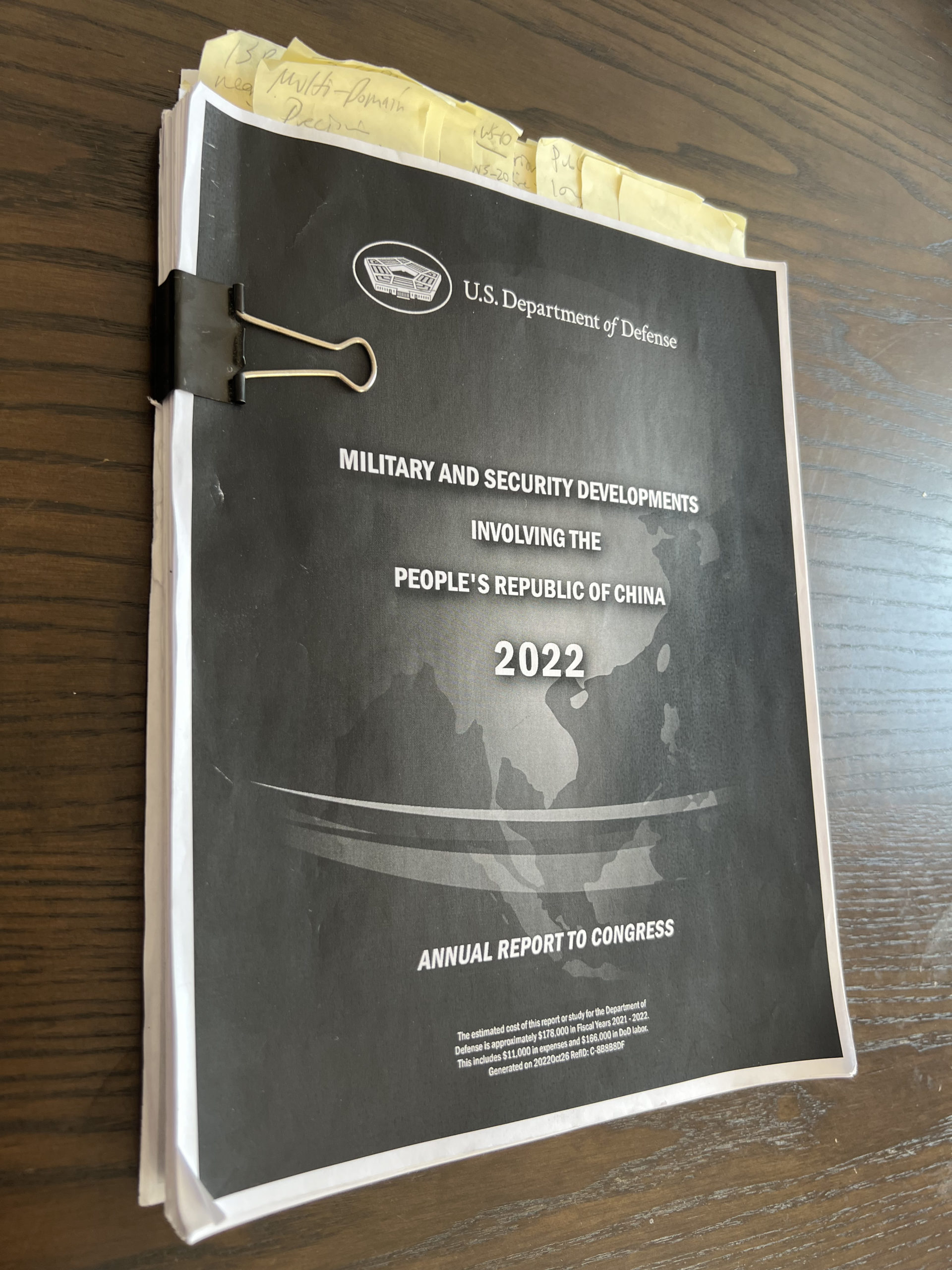
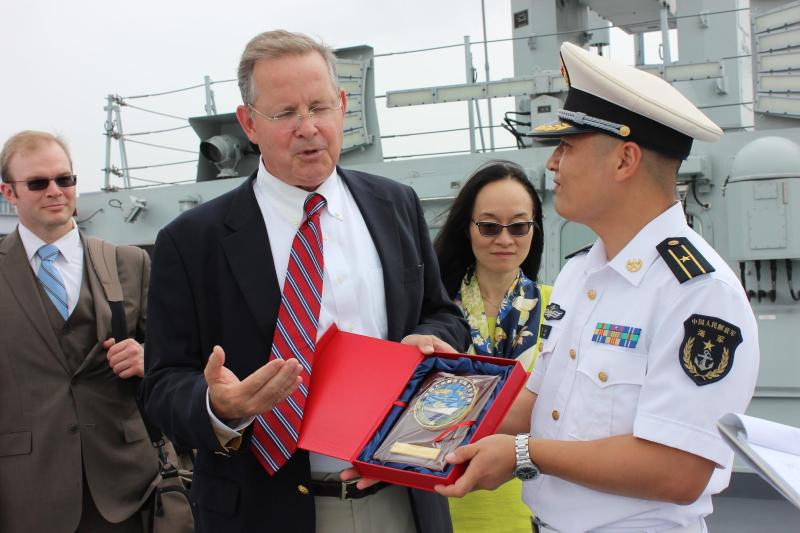
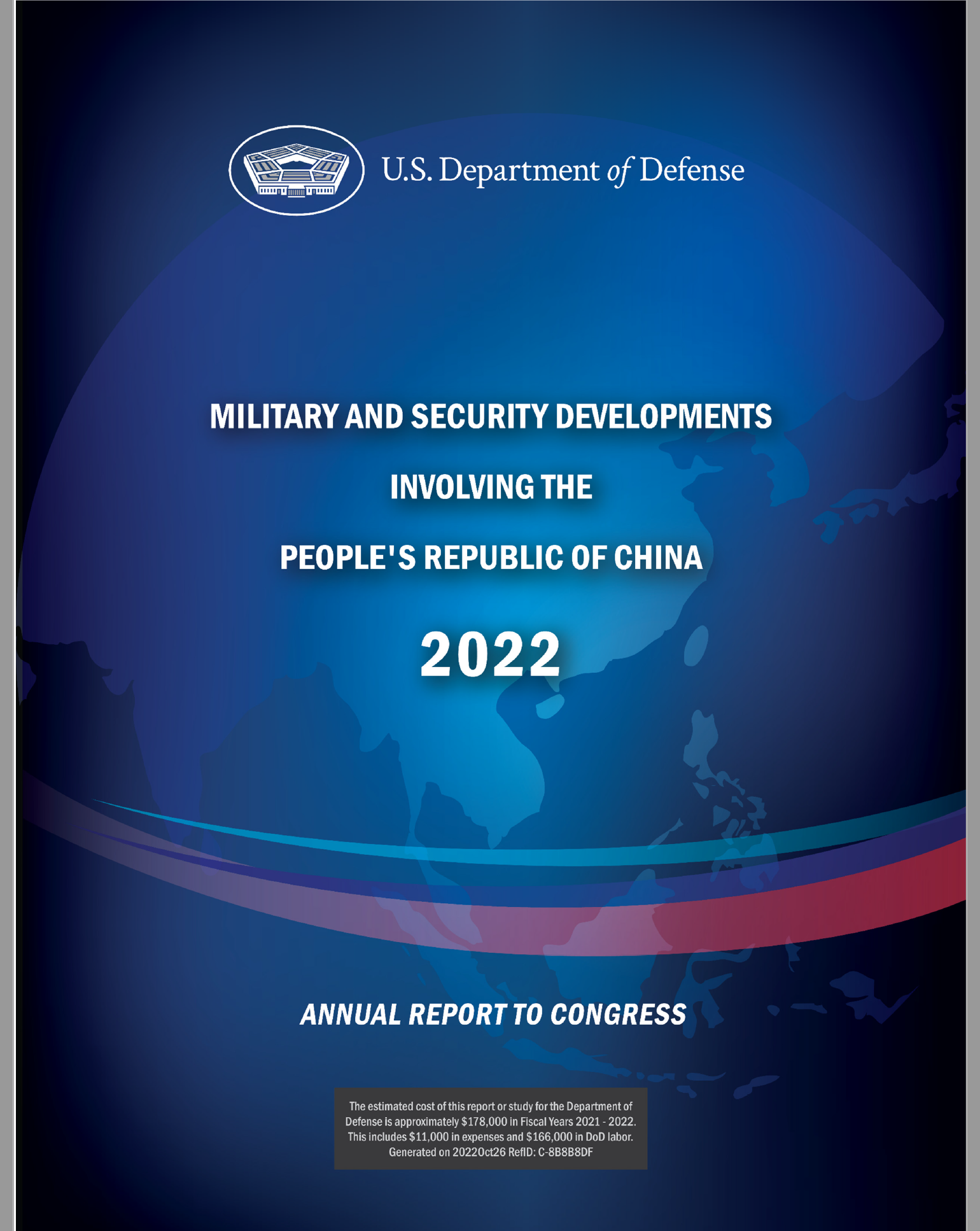
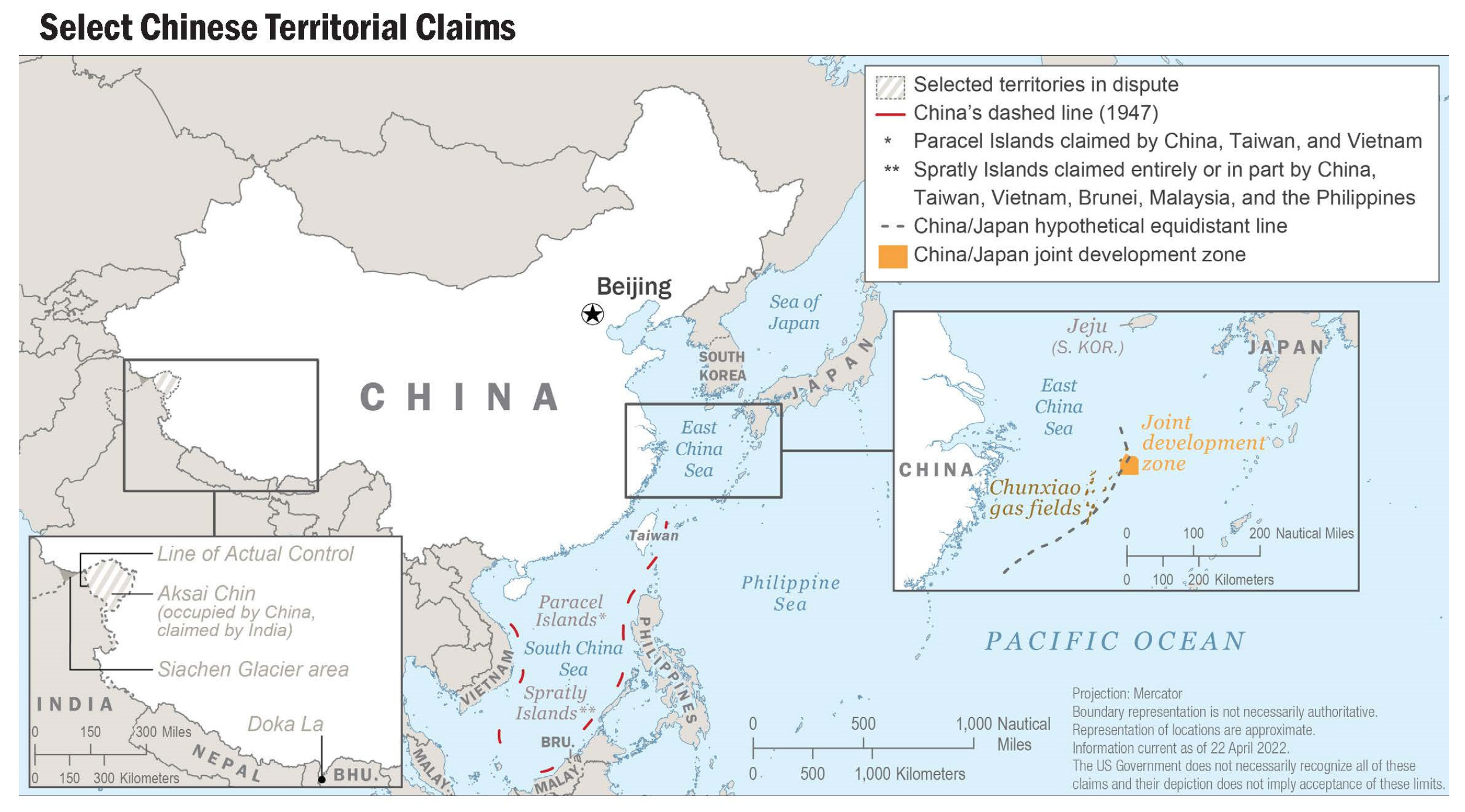
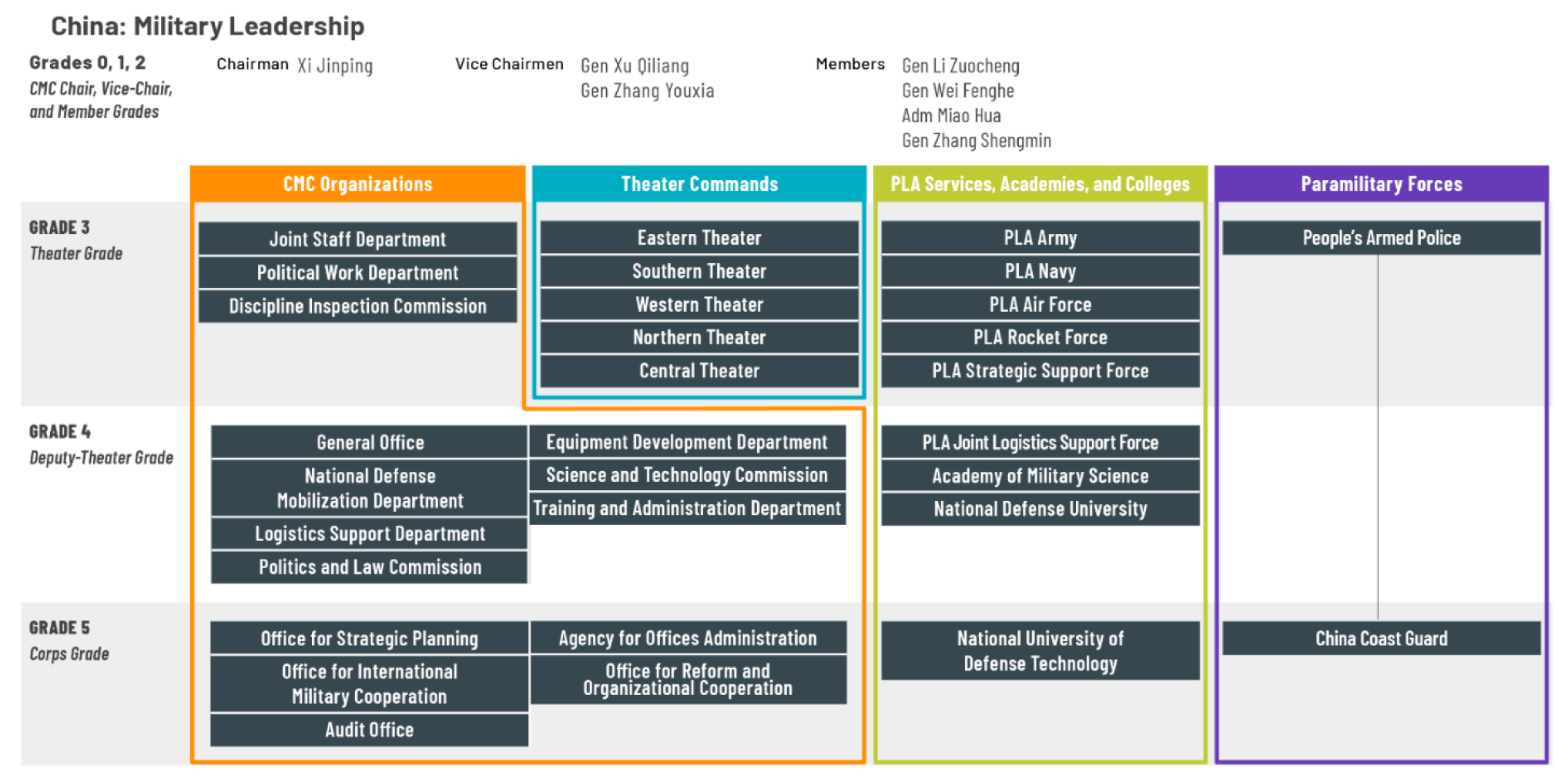
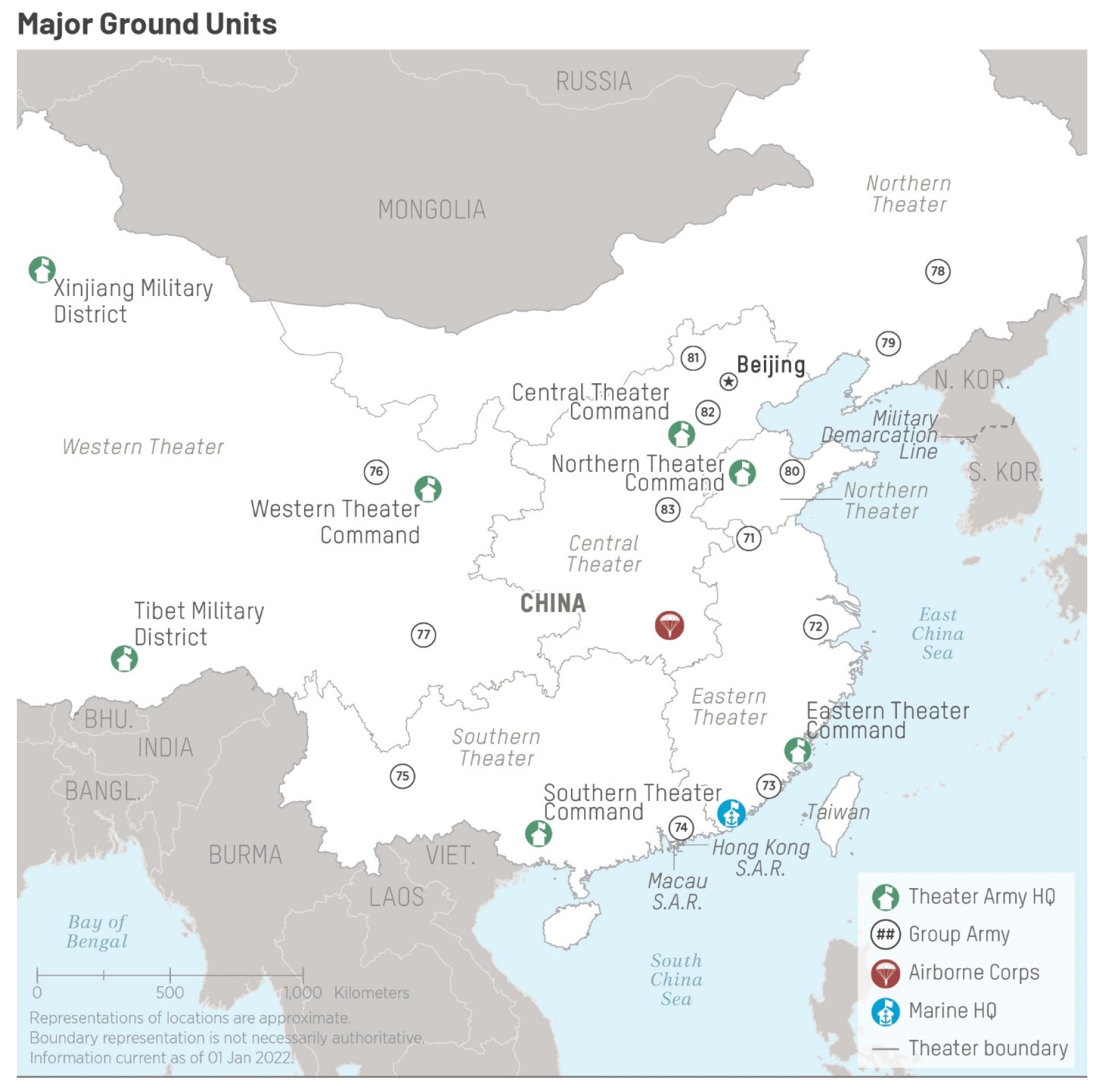
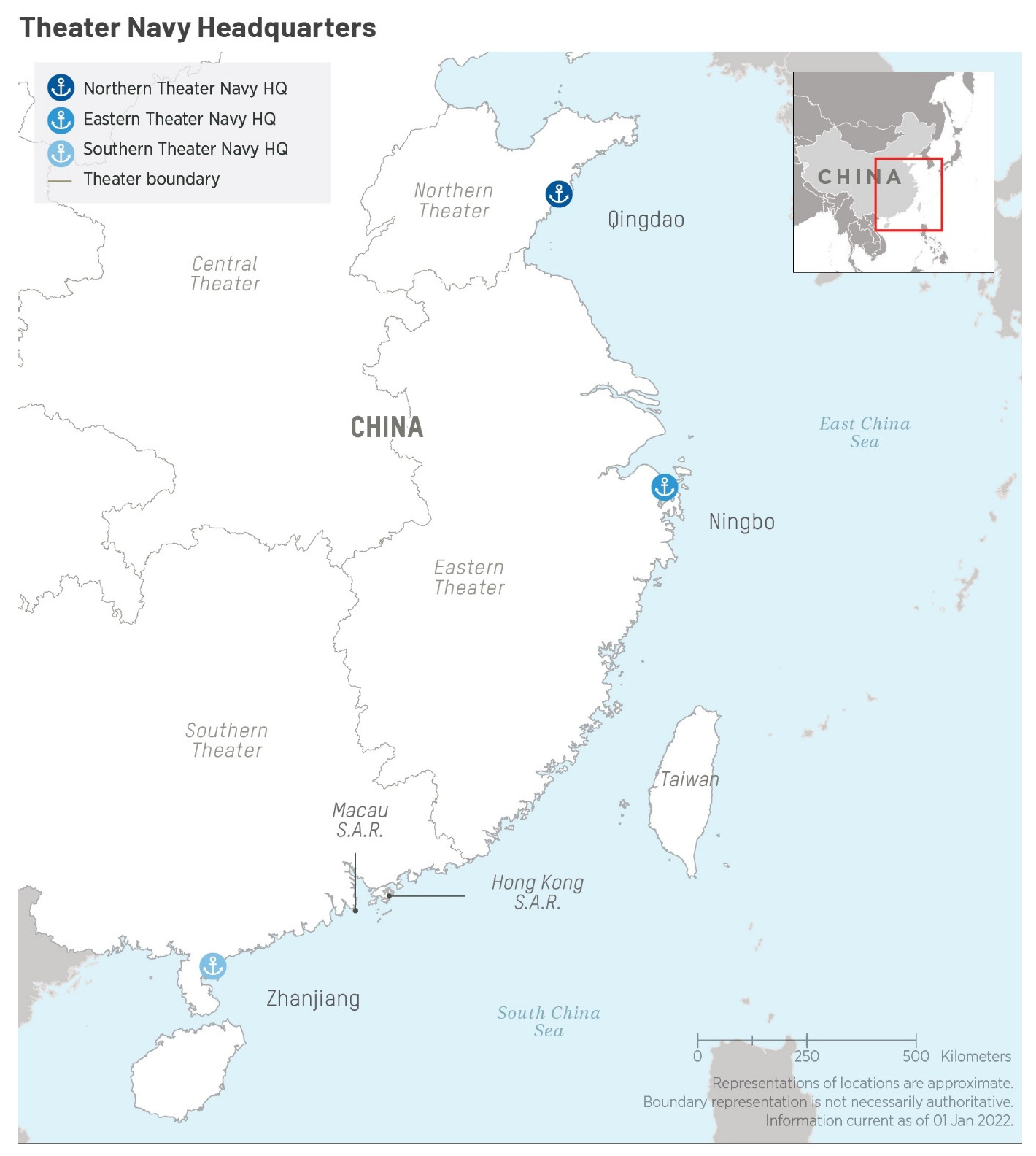
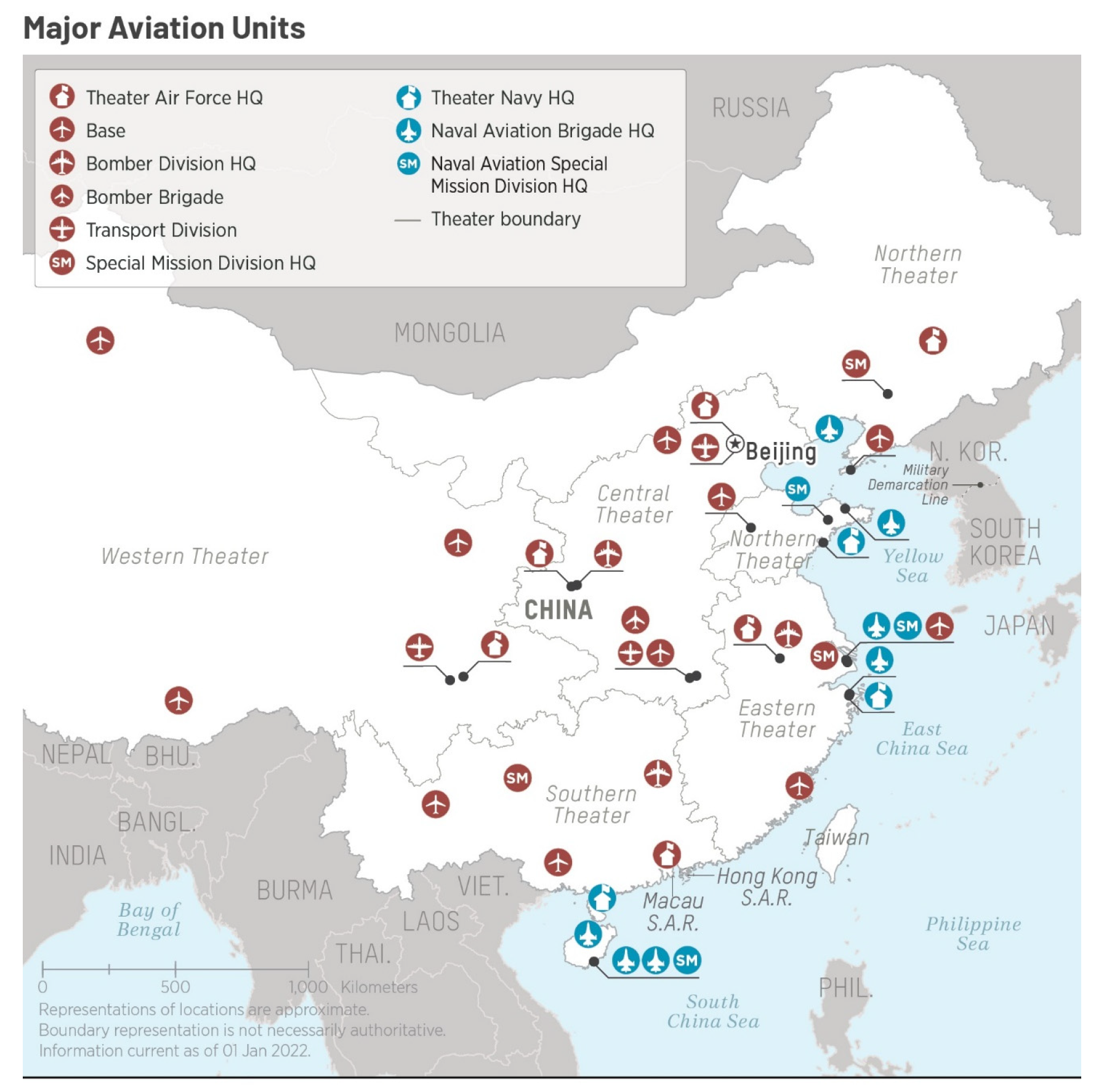
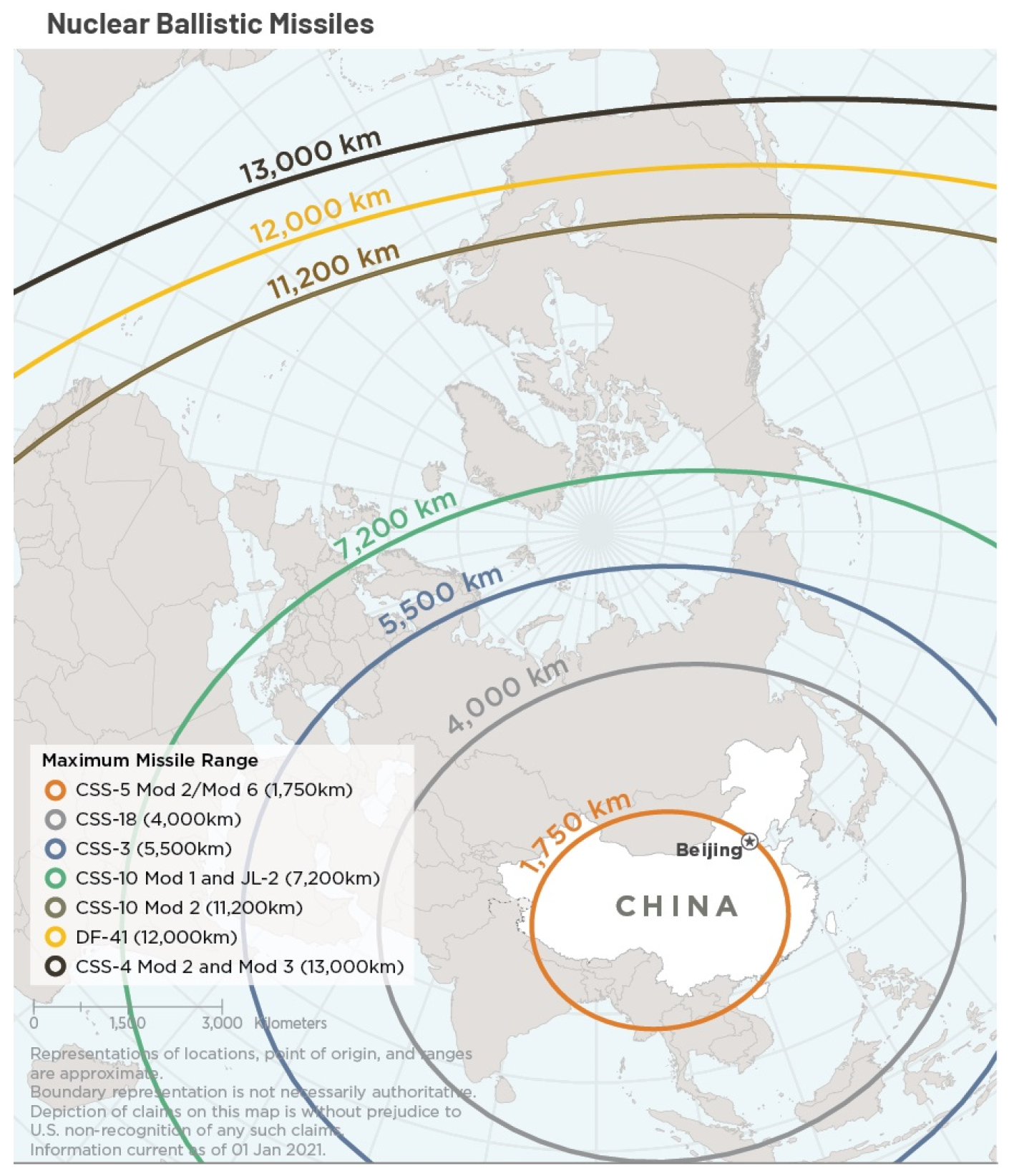
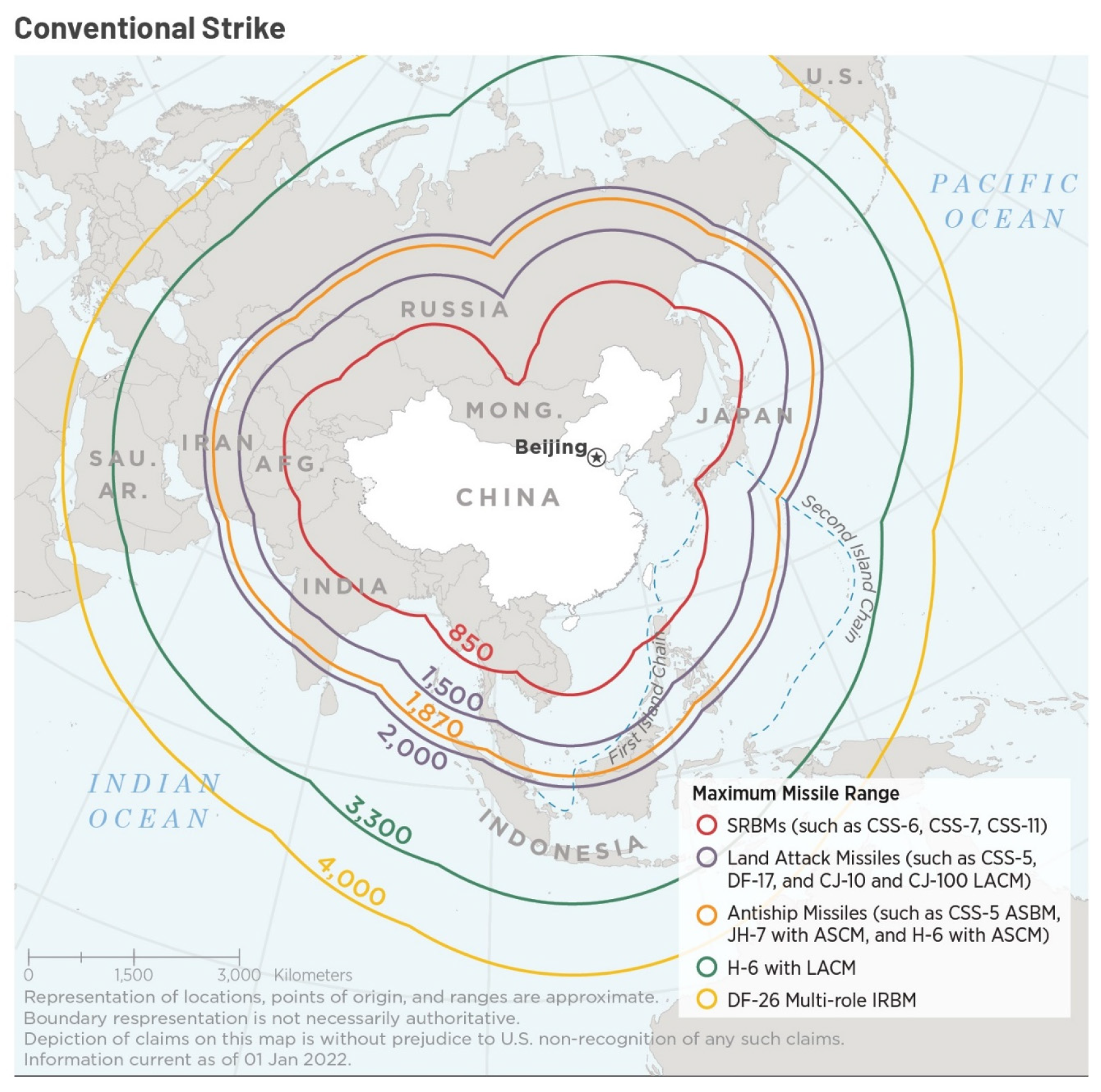
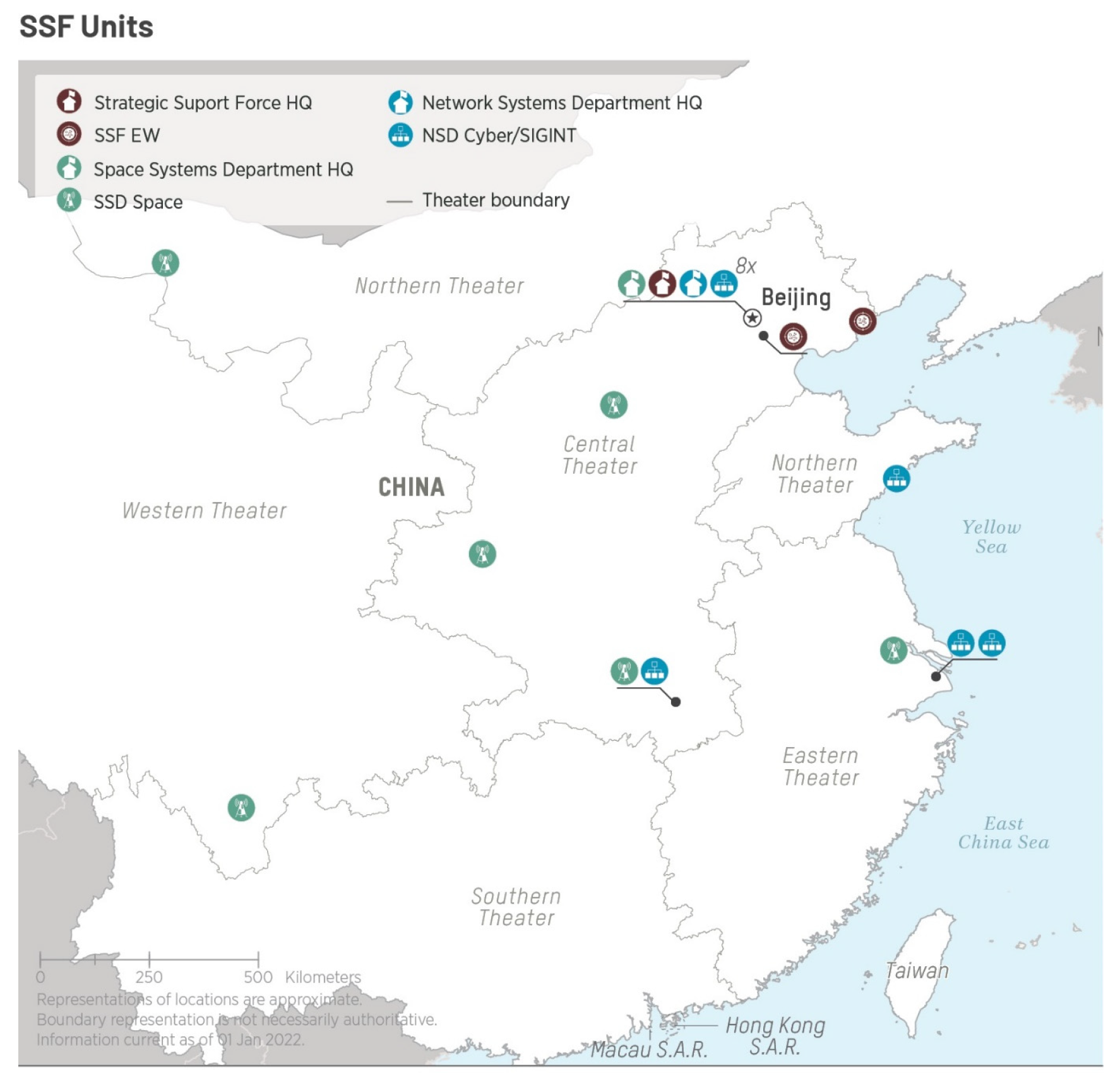
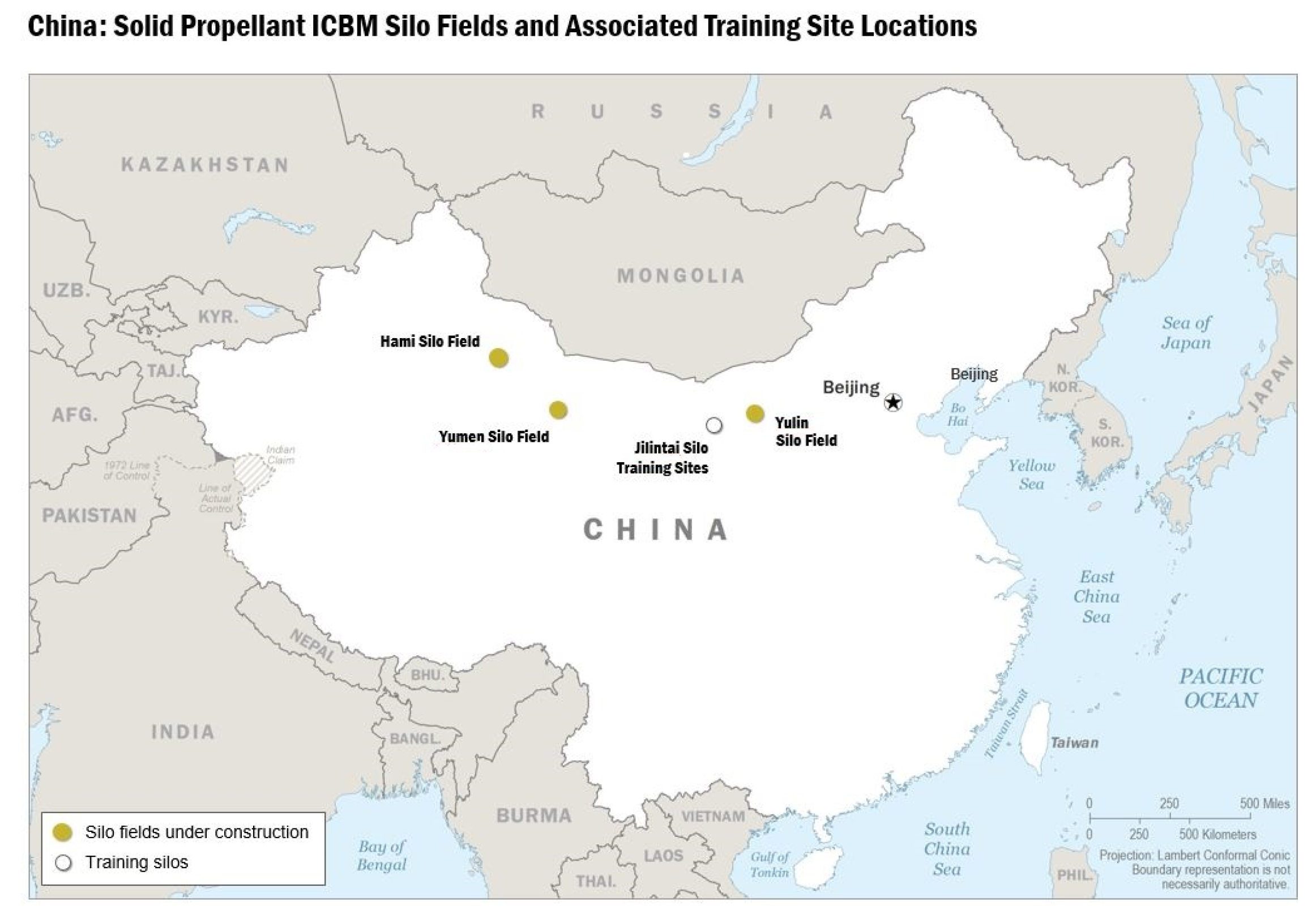
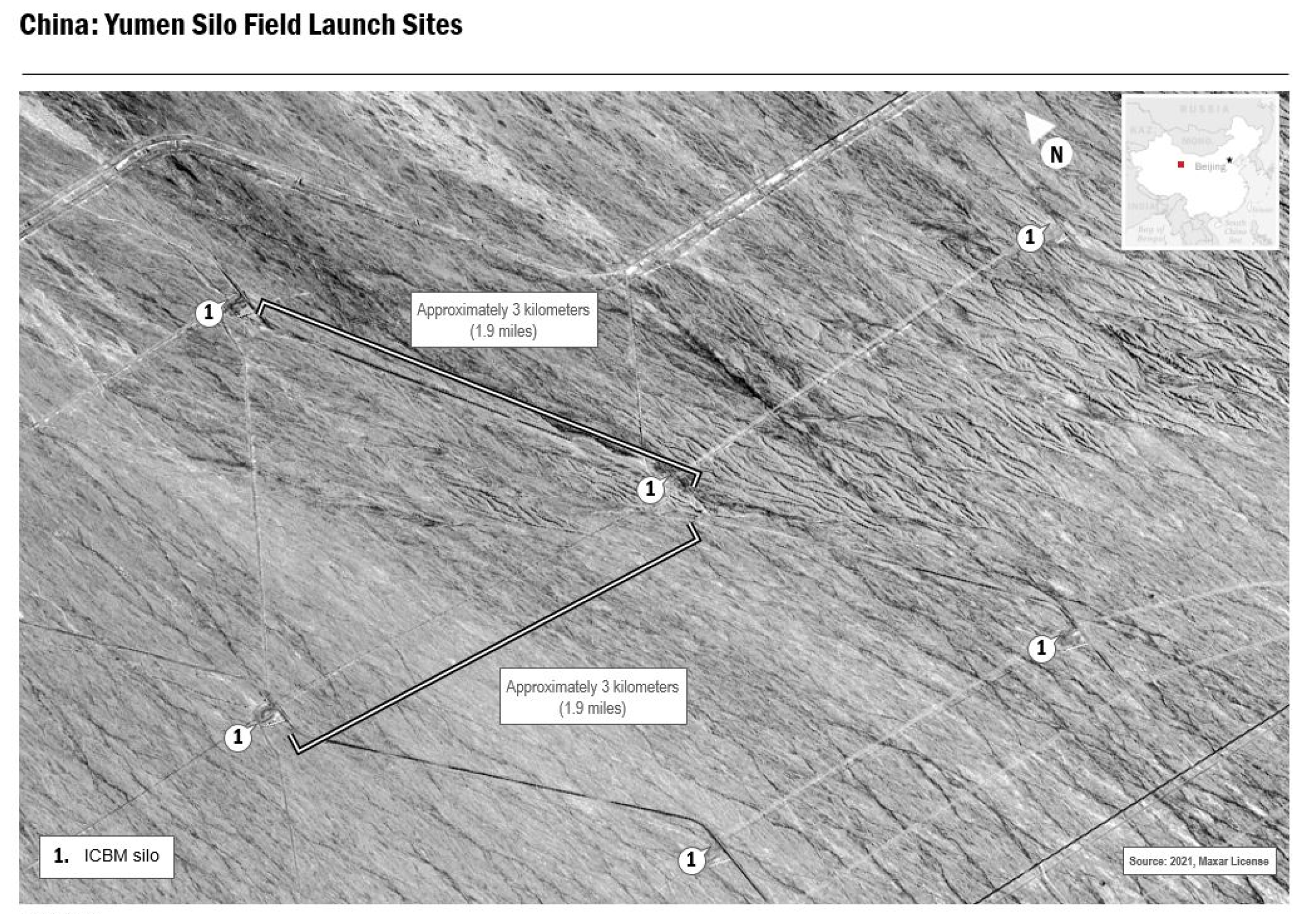
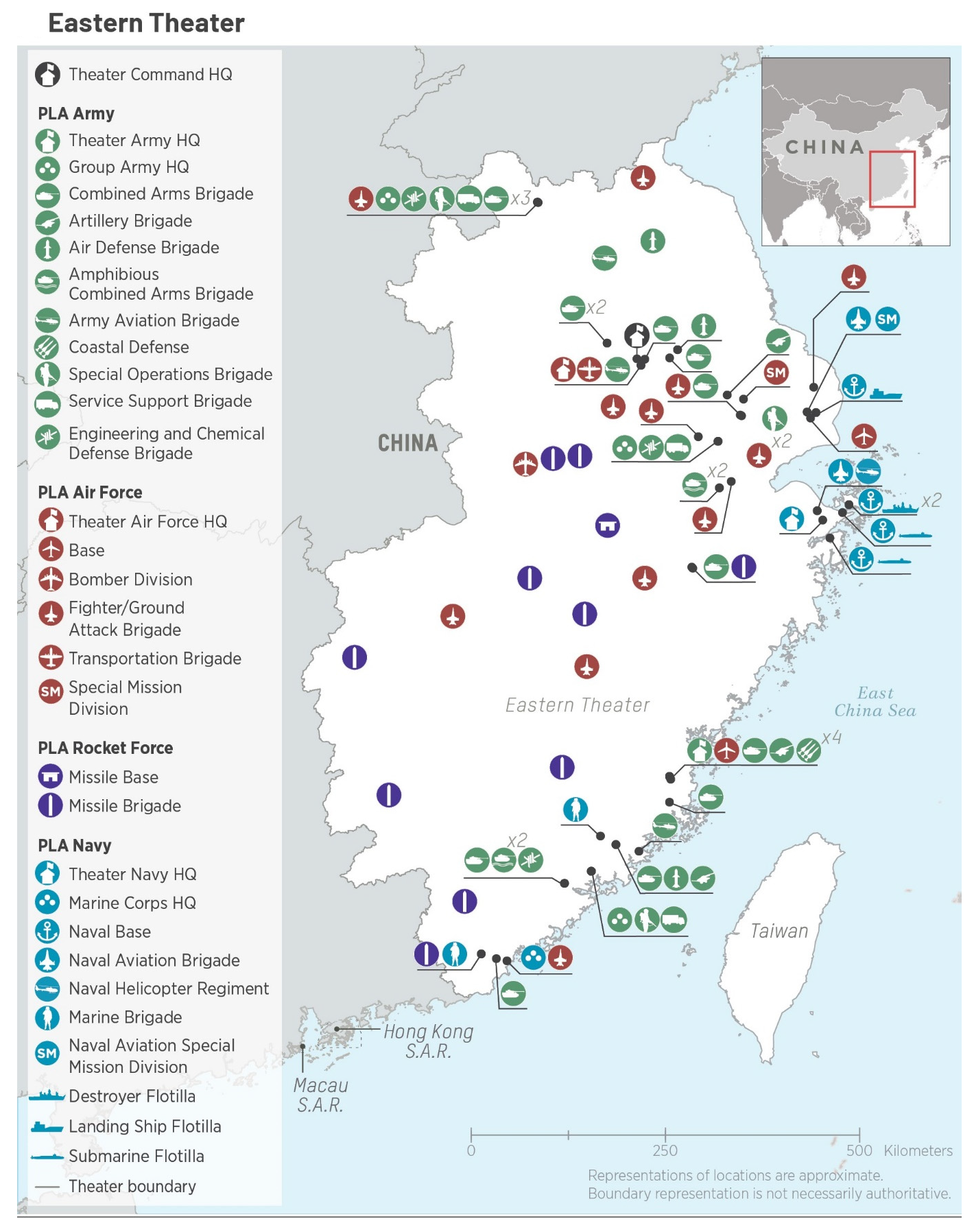
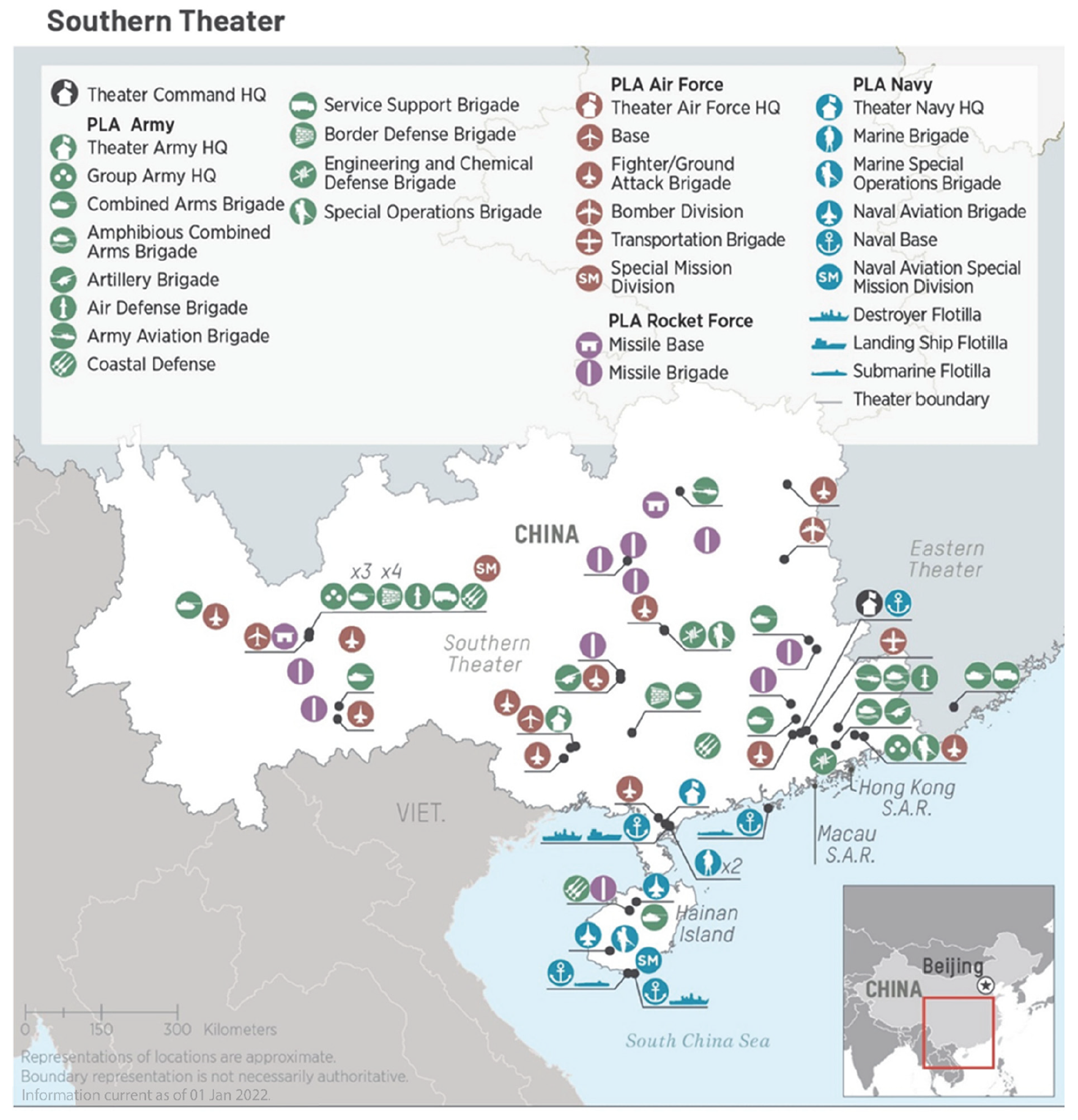
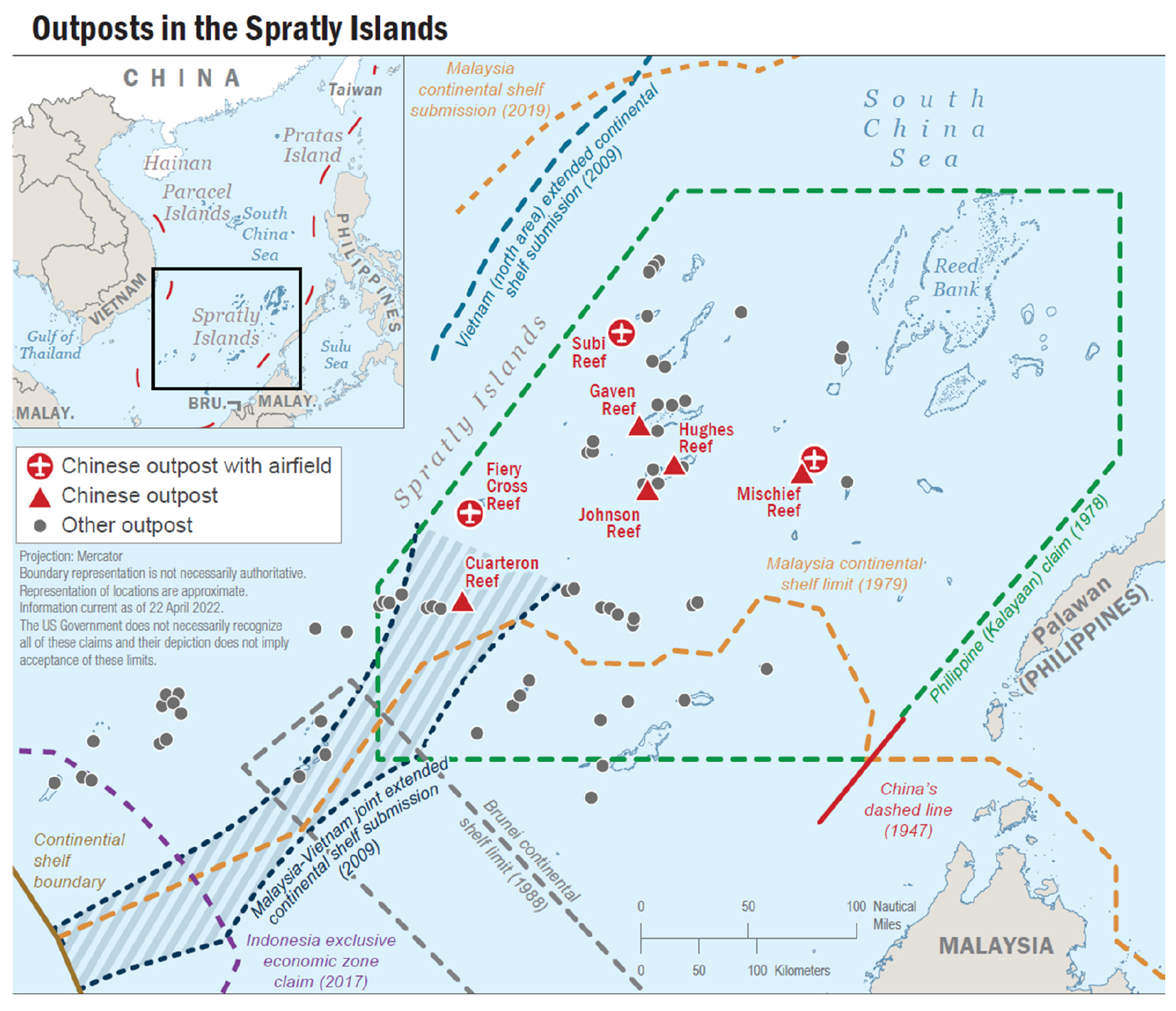
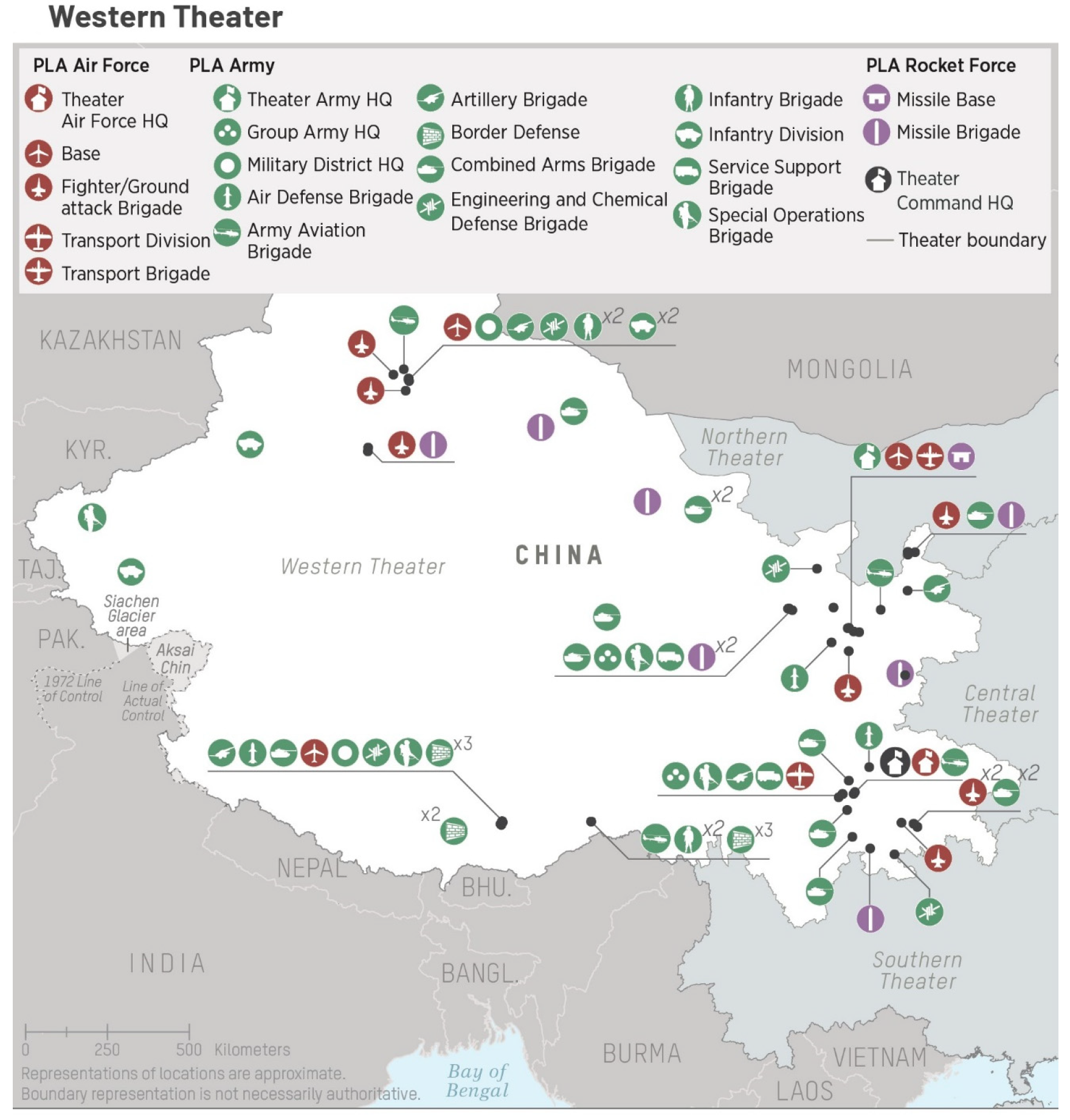
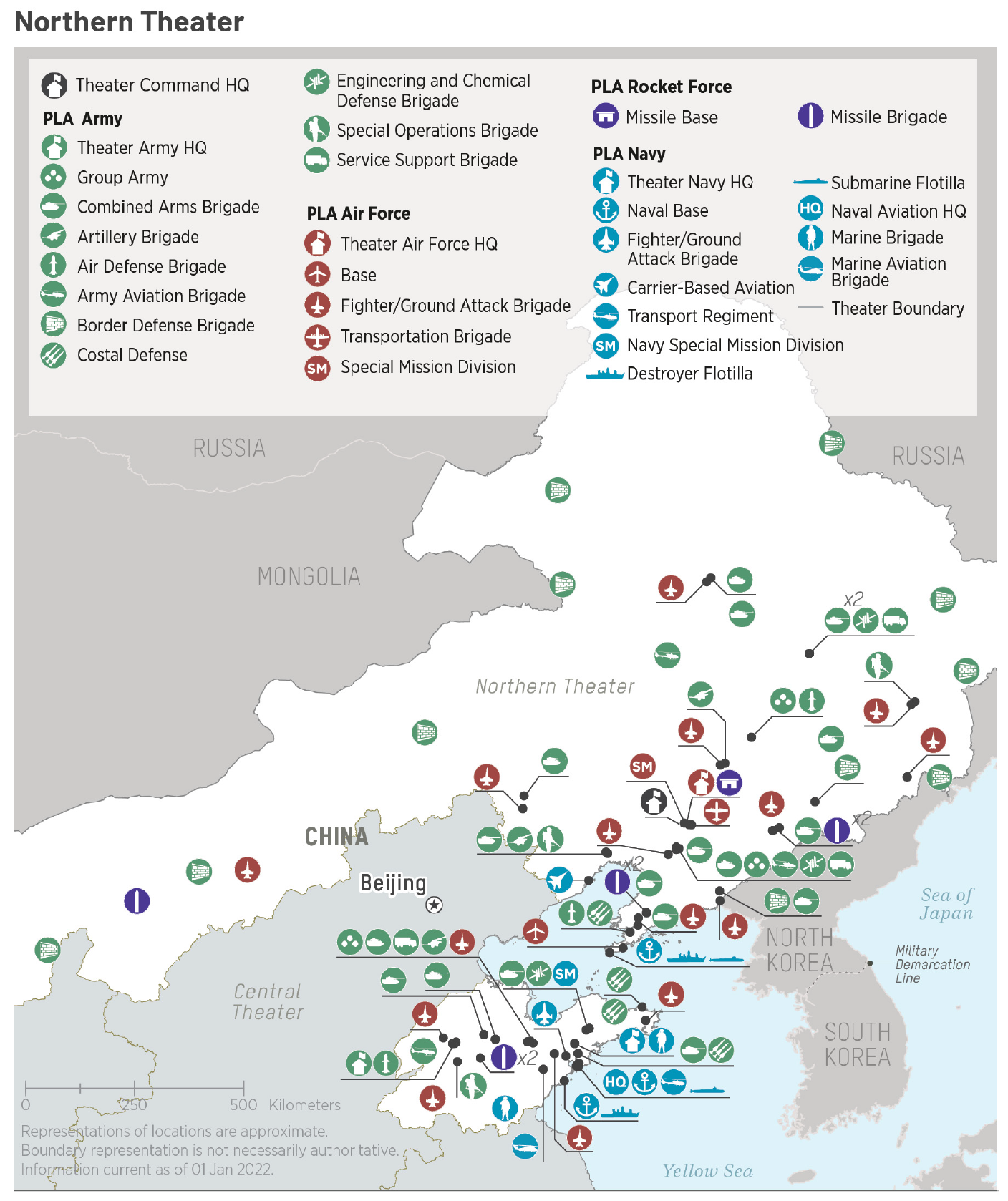
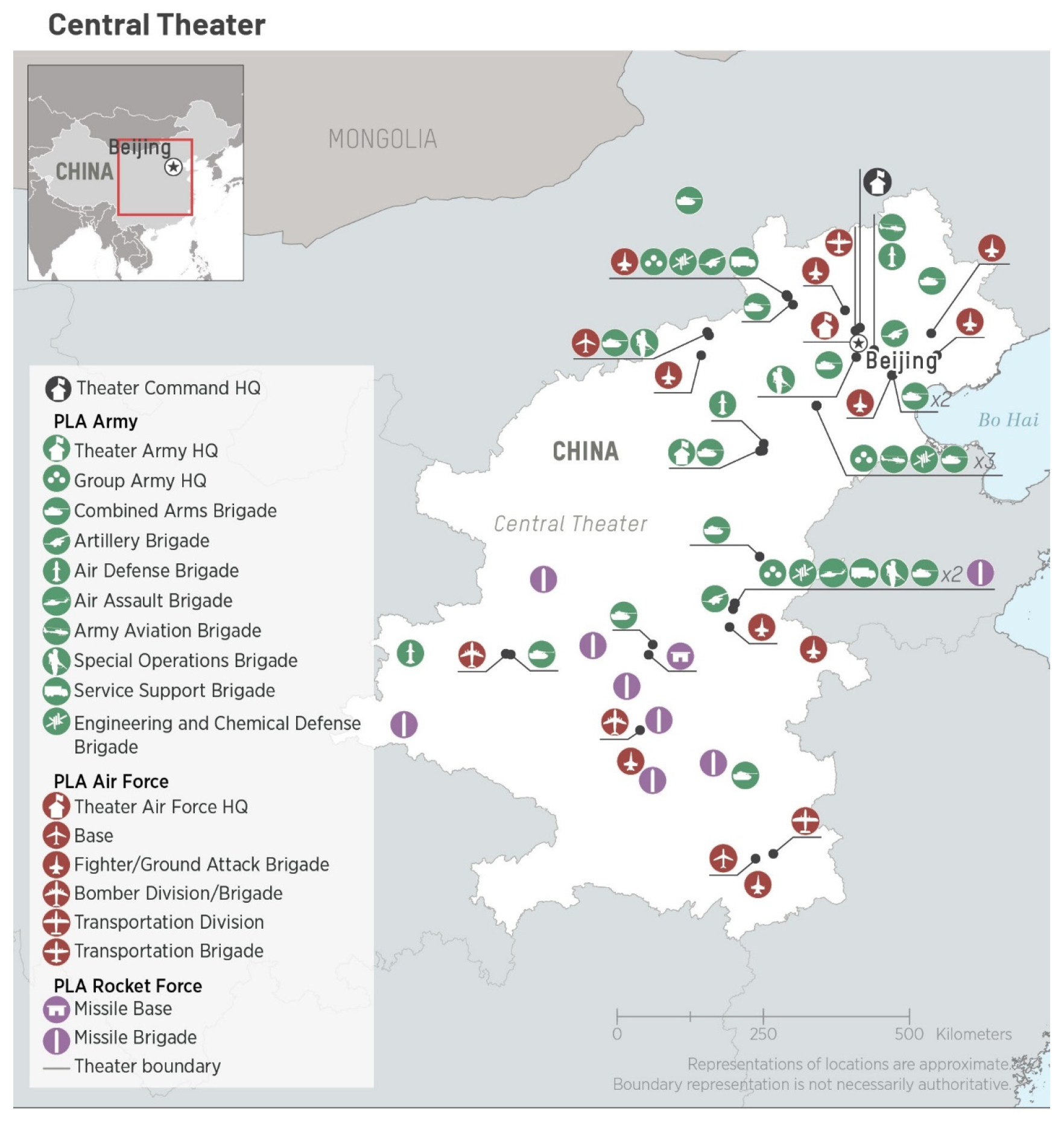
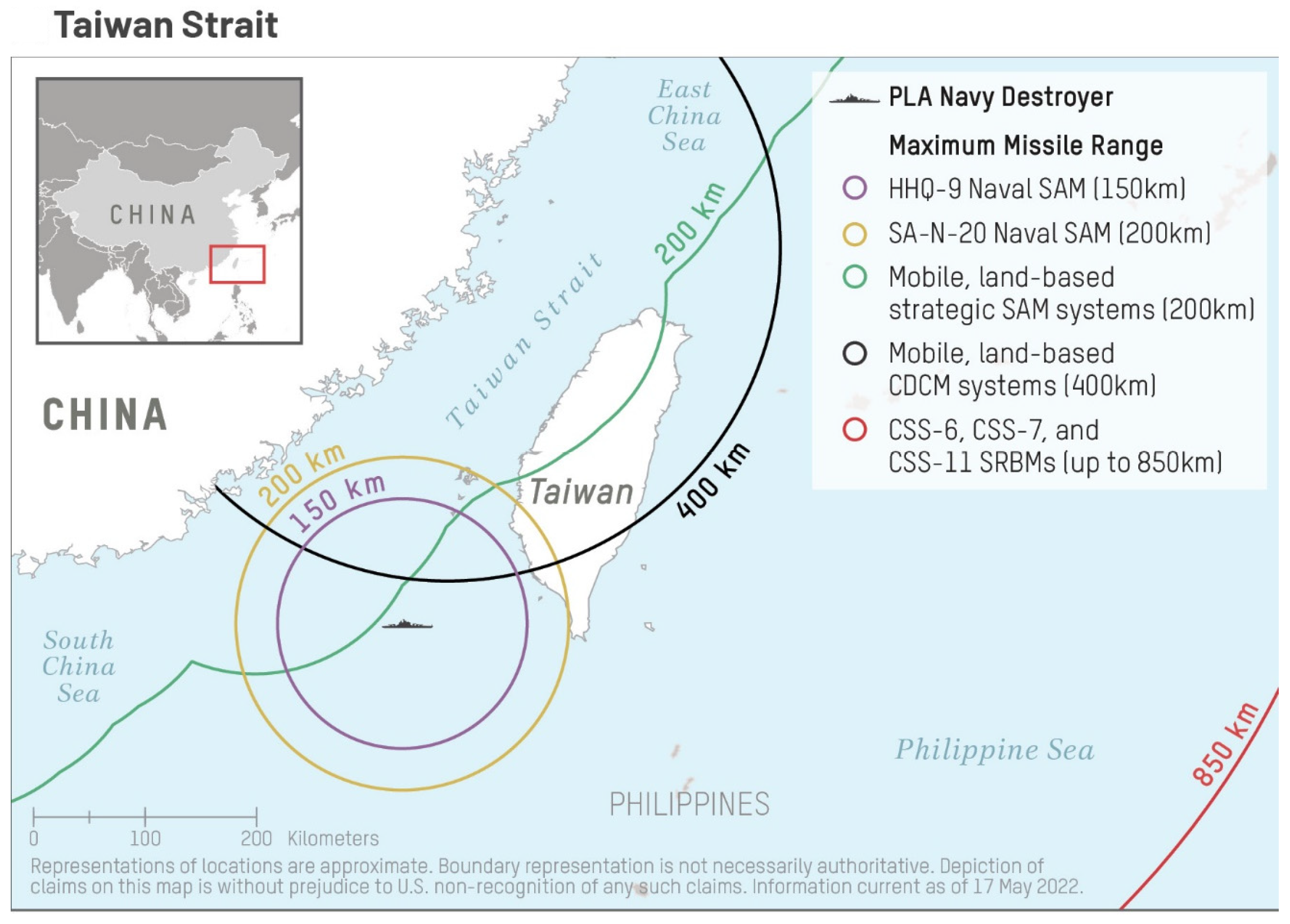
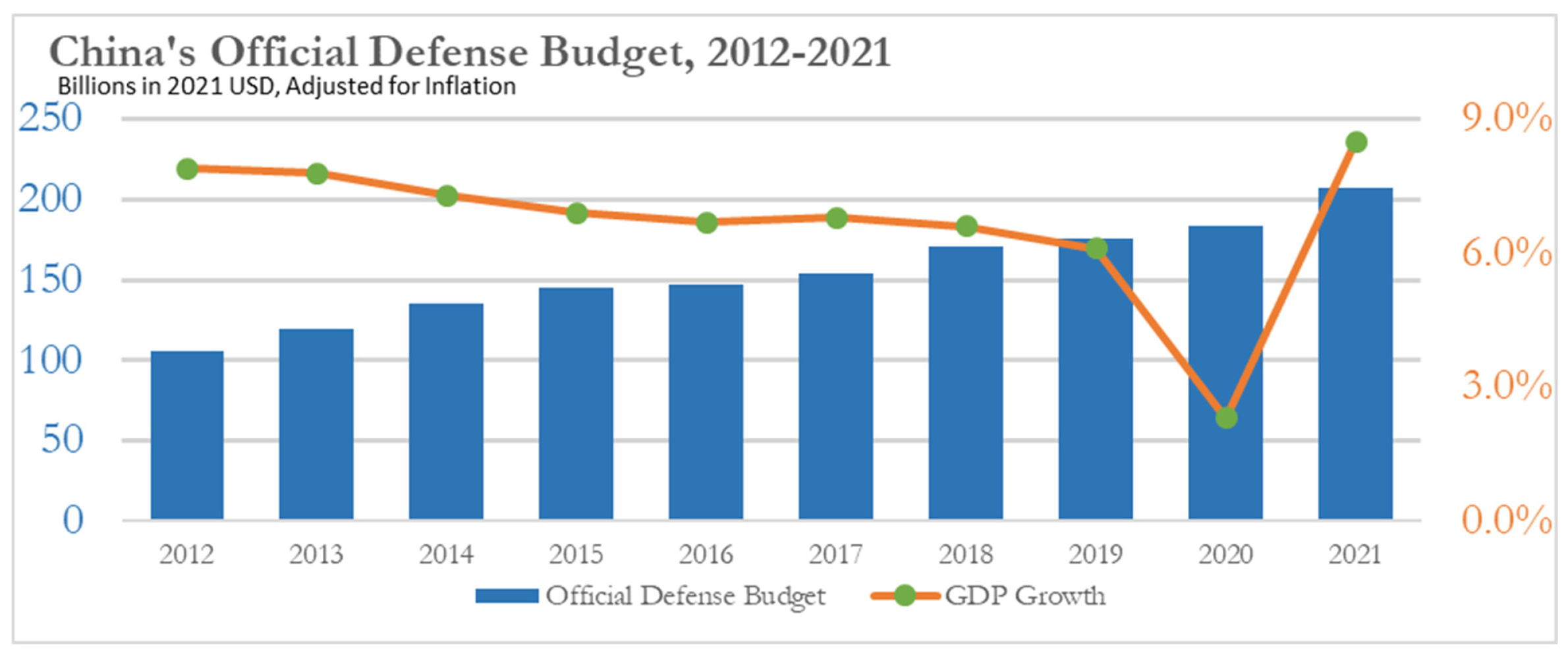
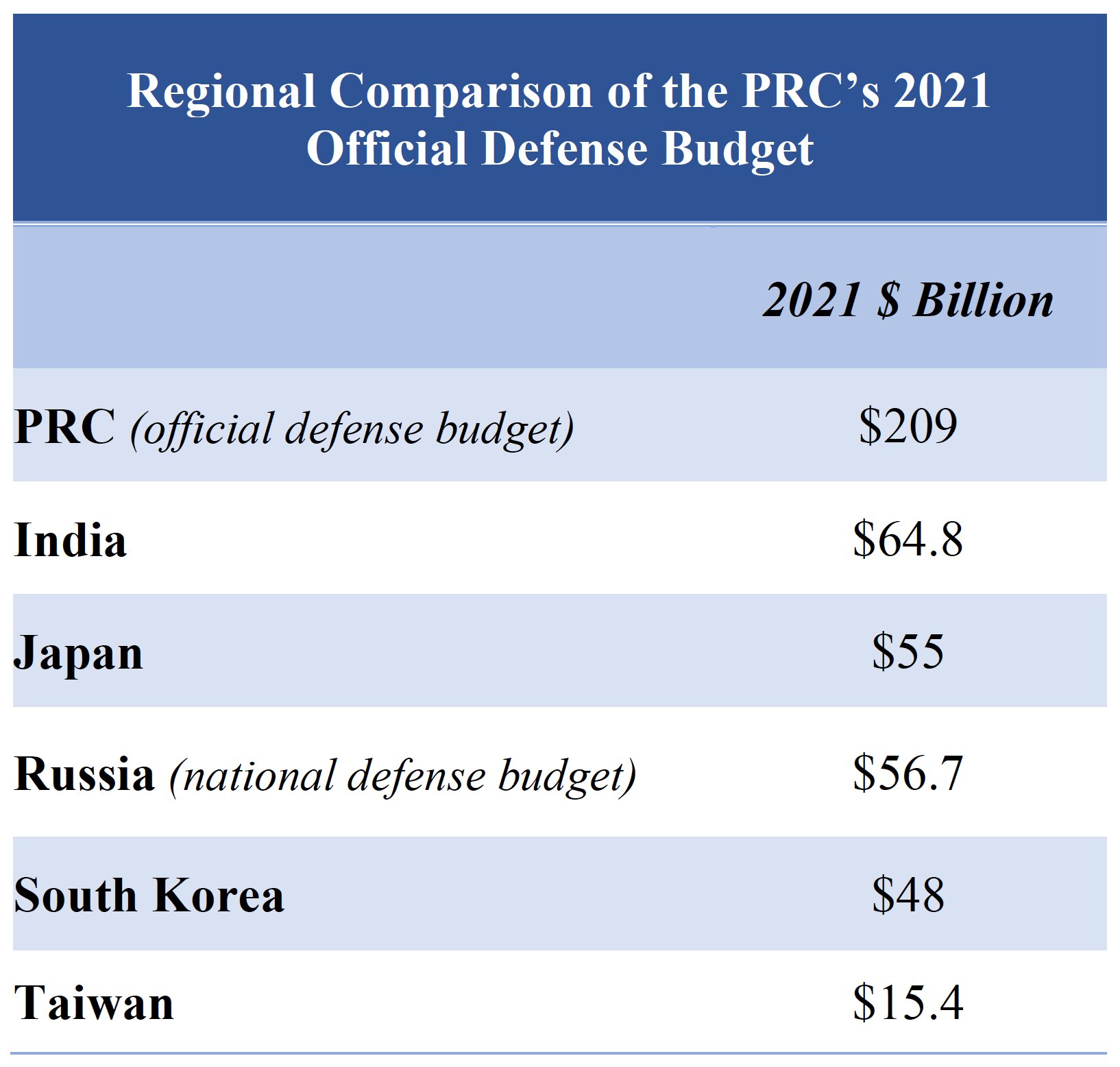
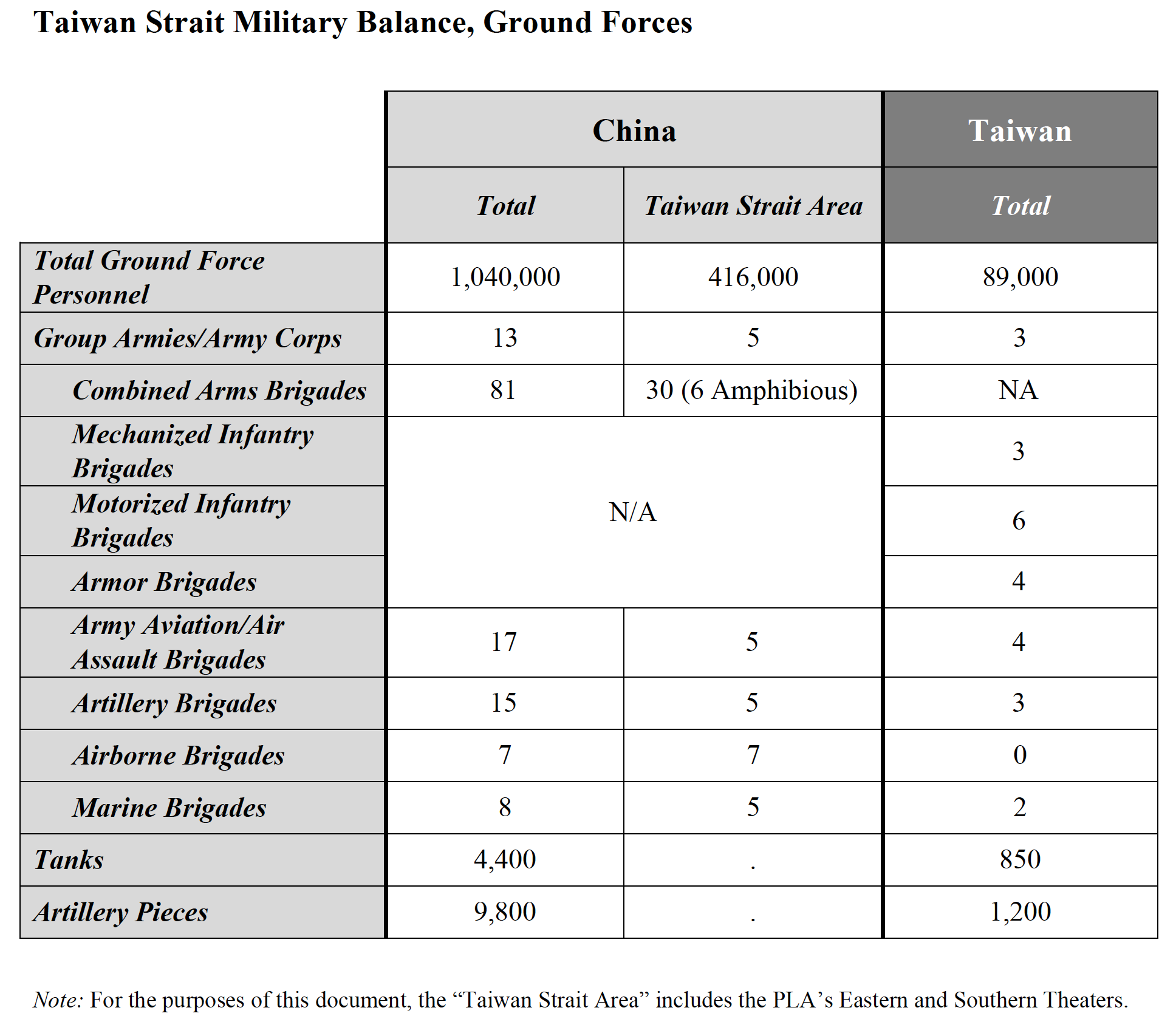
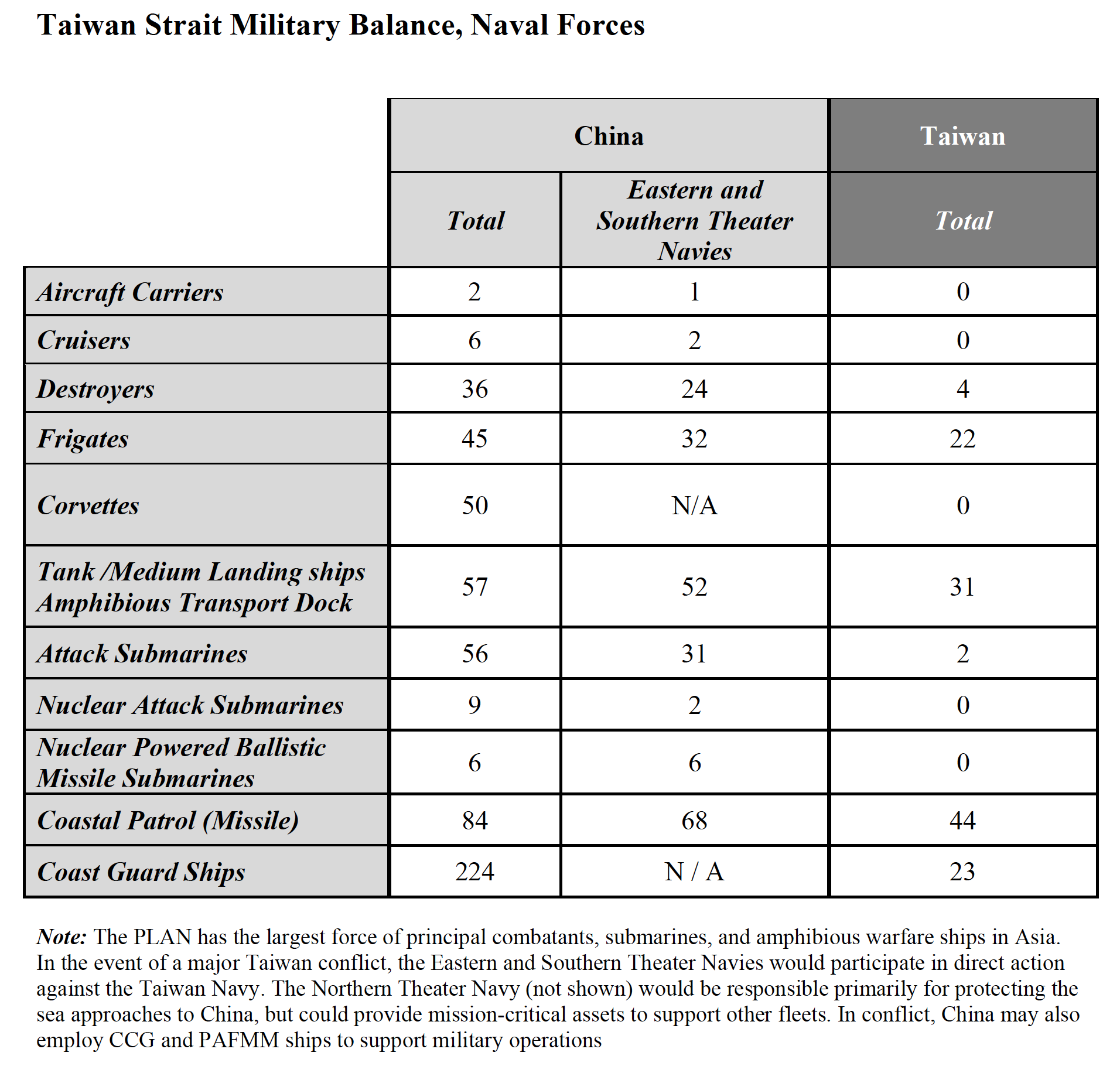
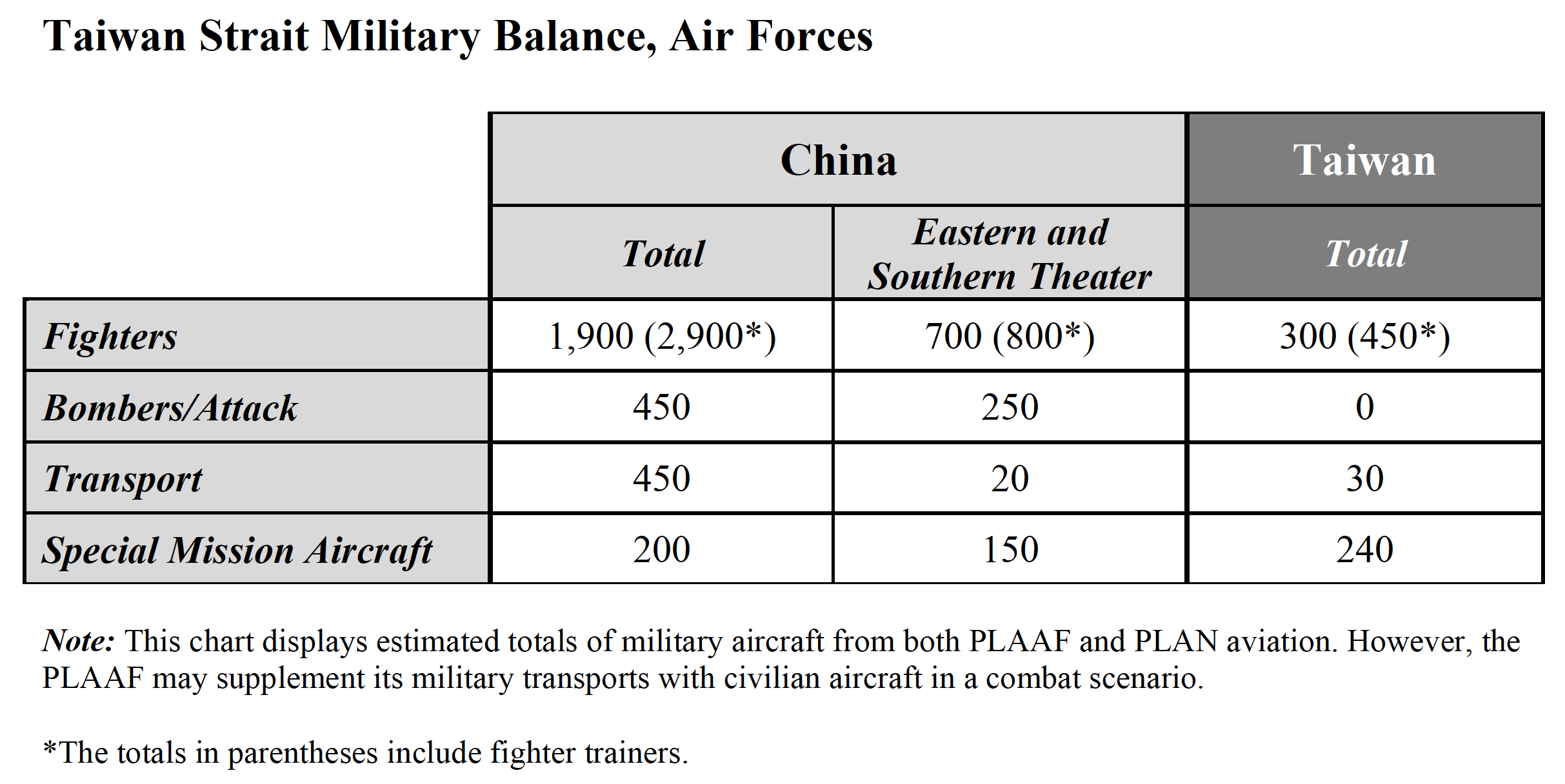
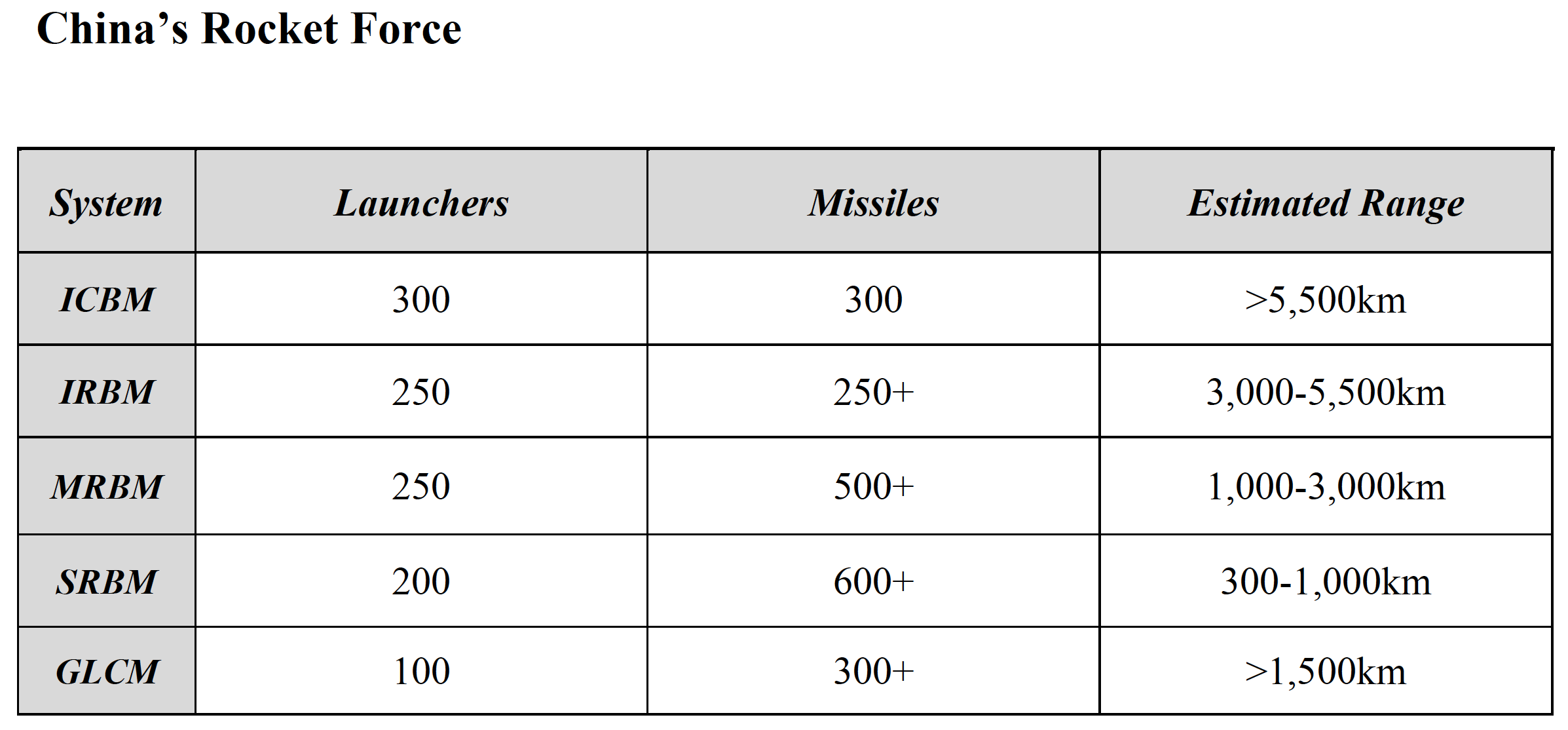
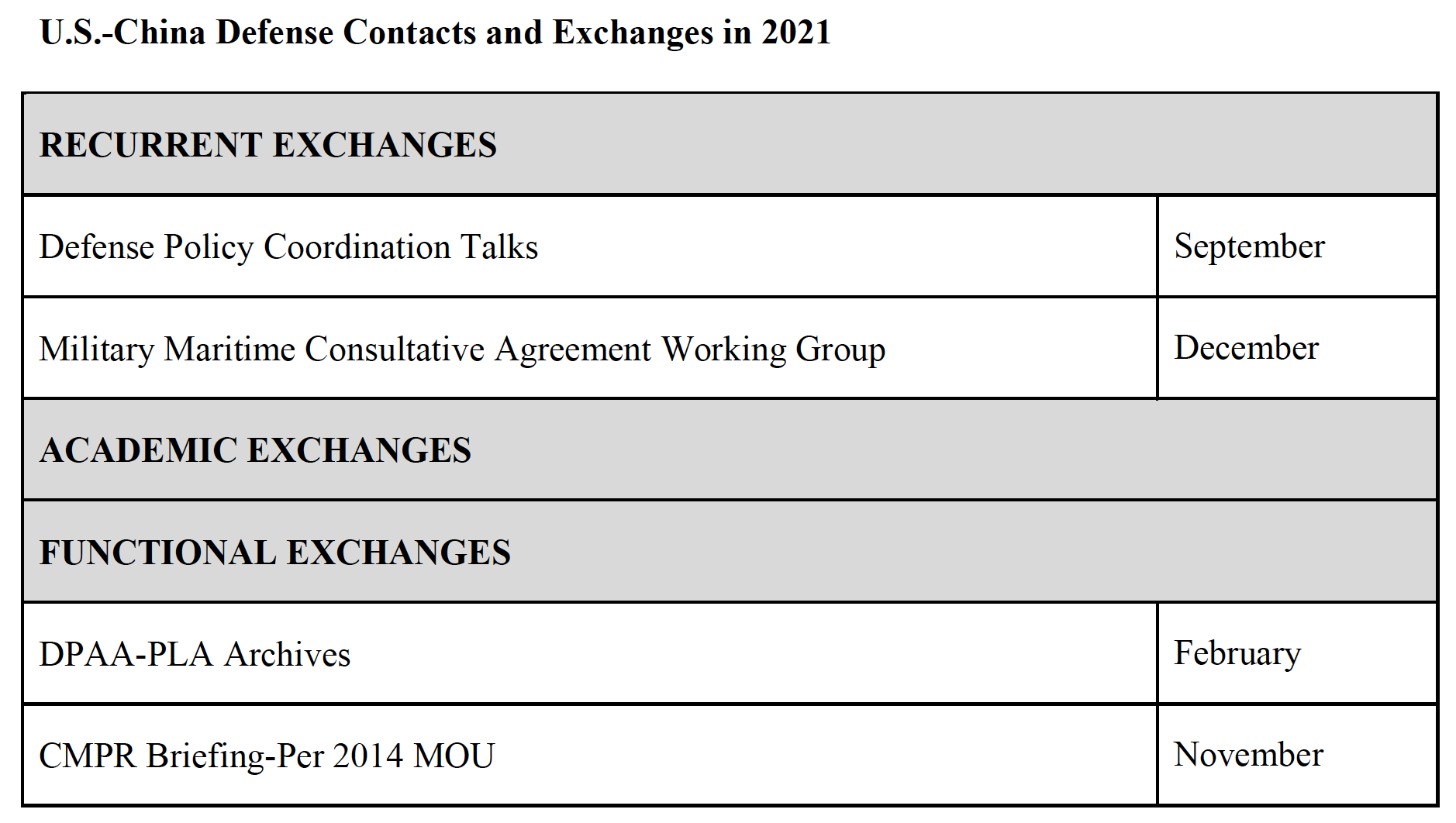
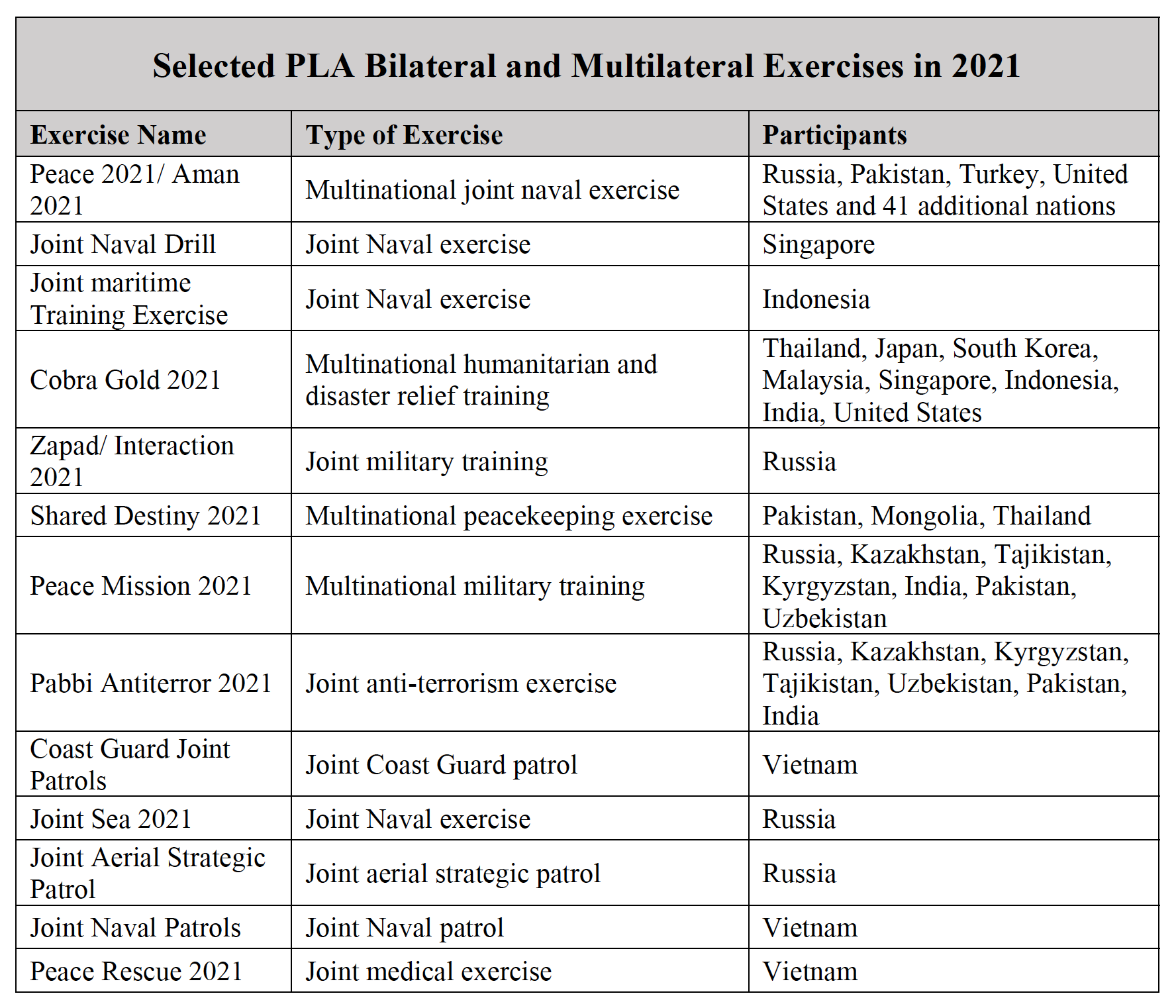
No comments:
Post a Comment